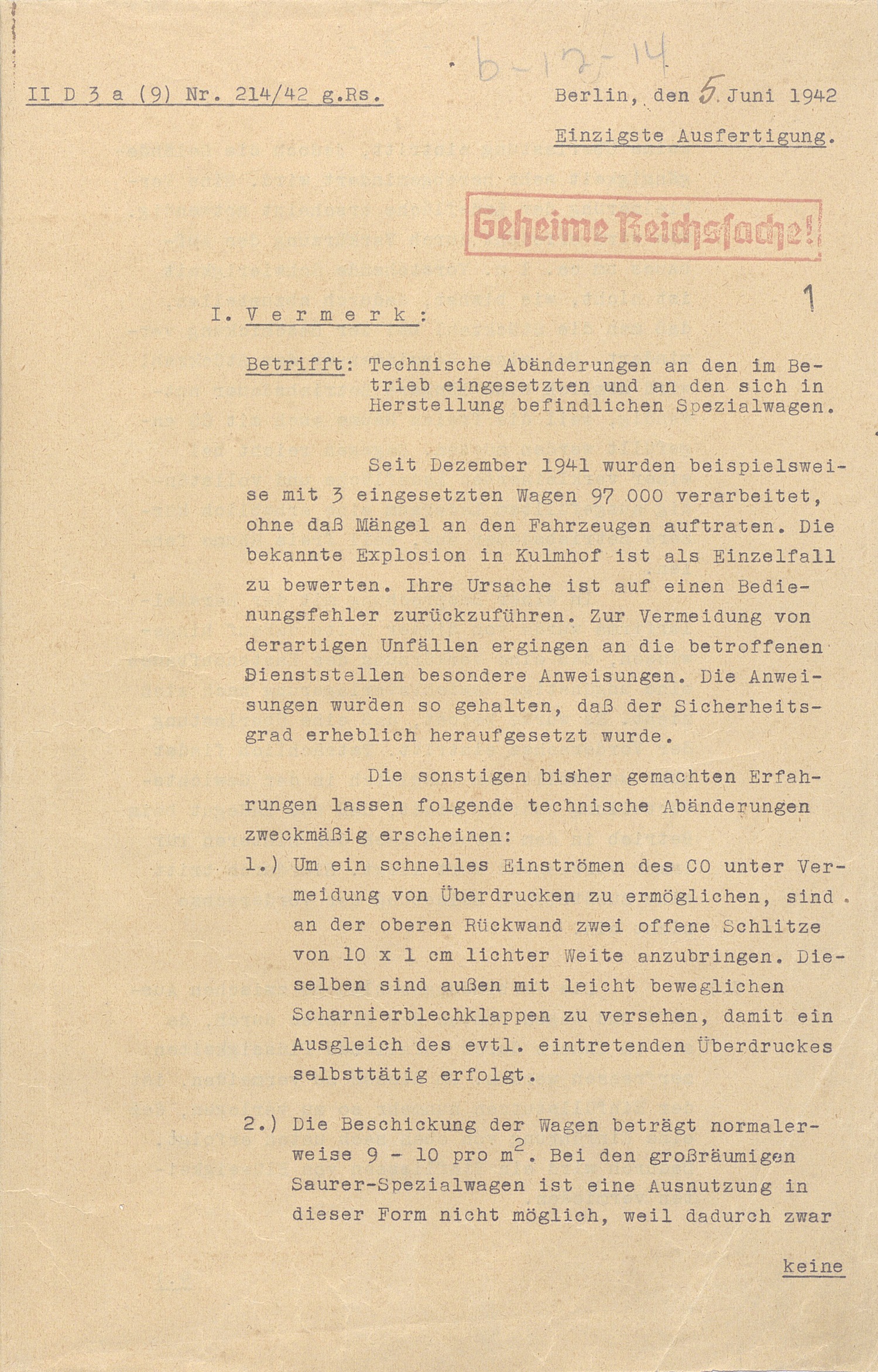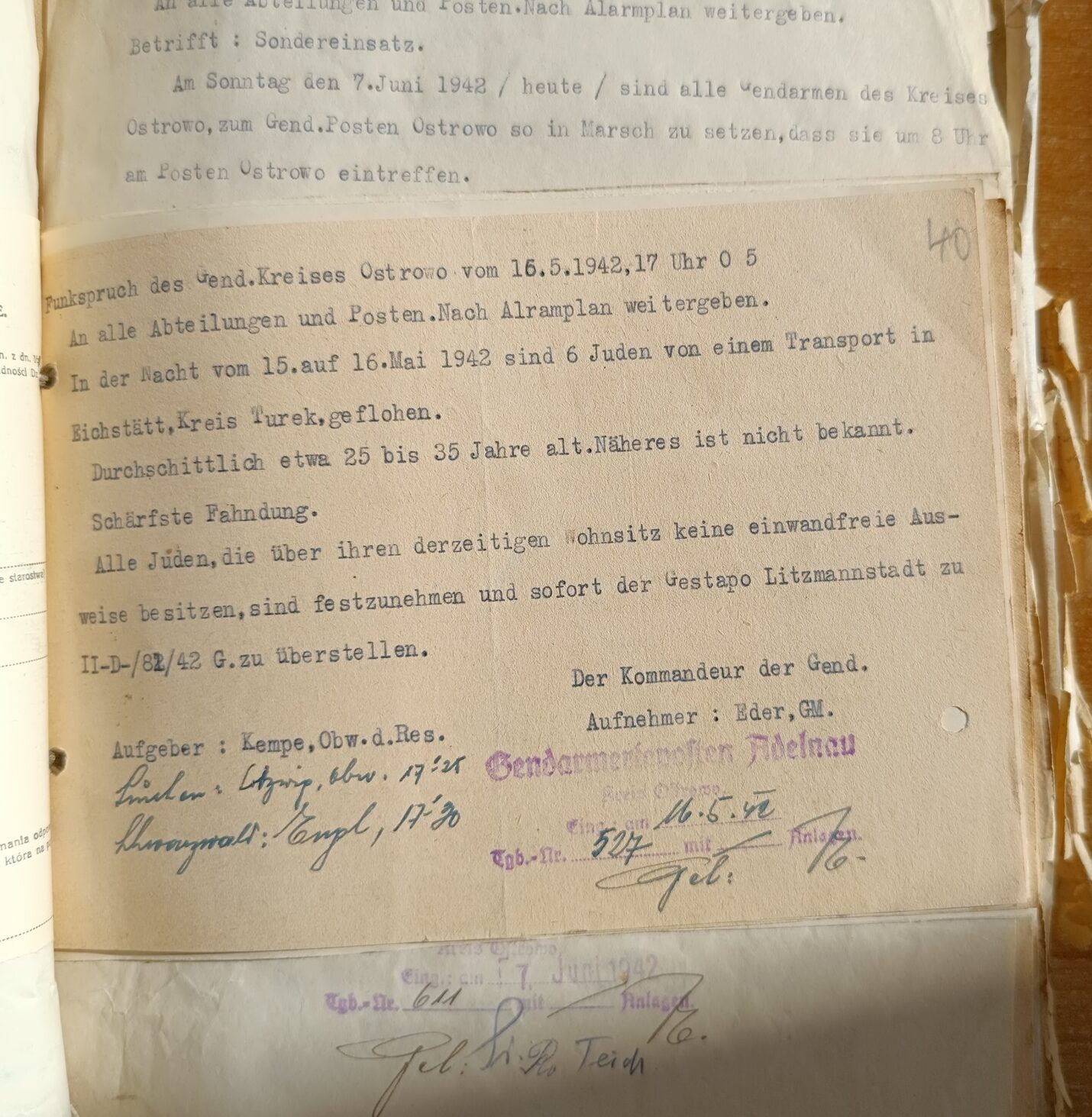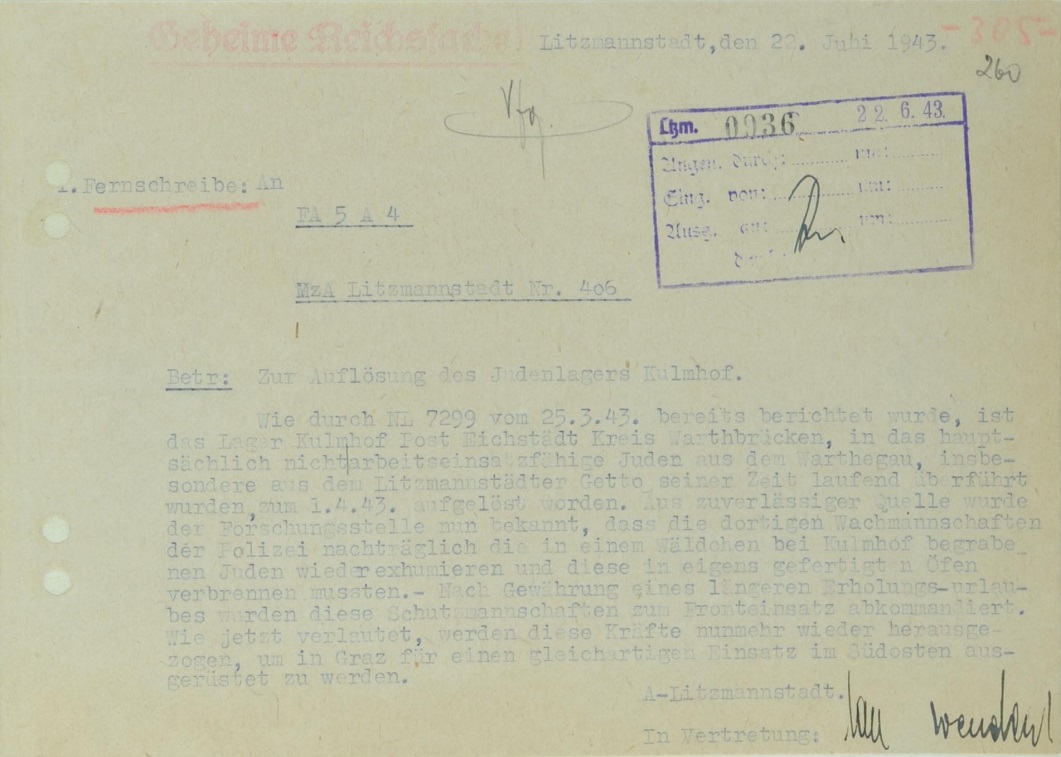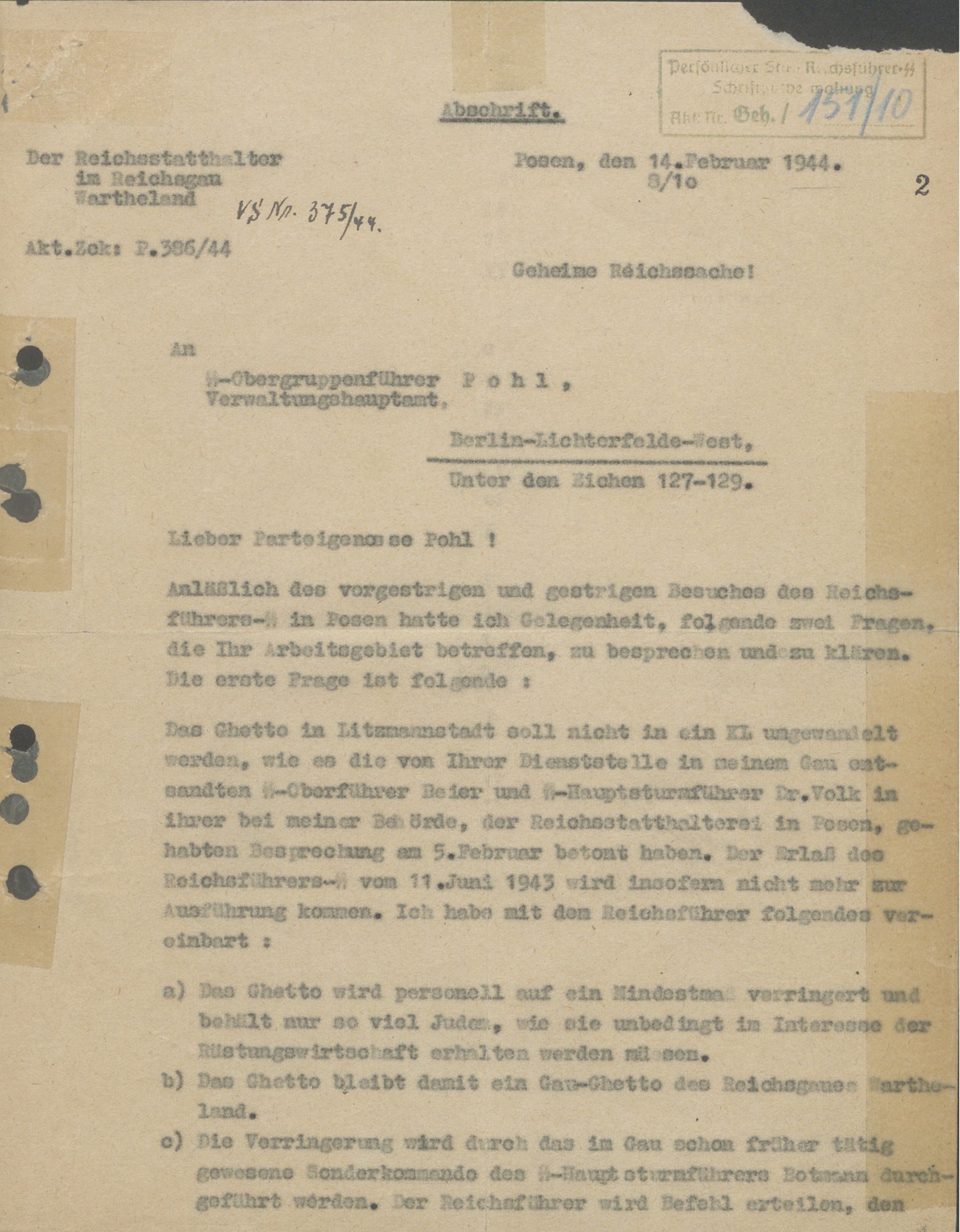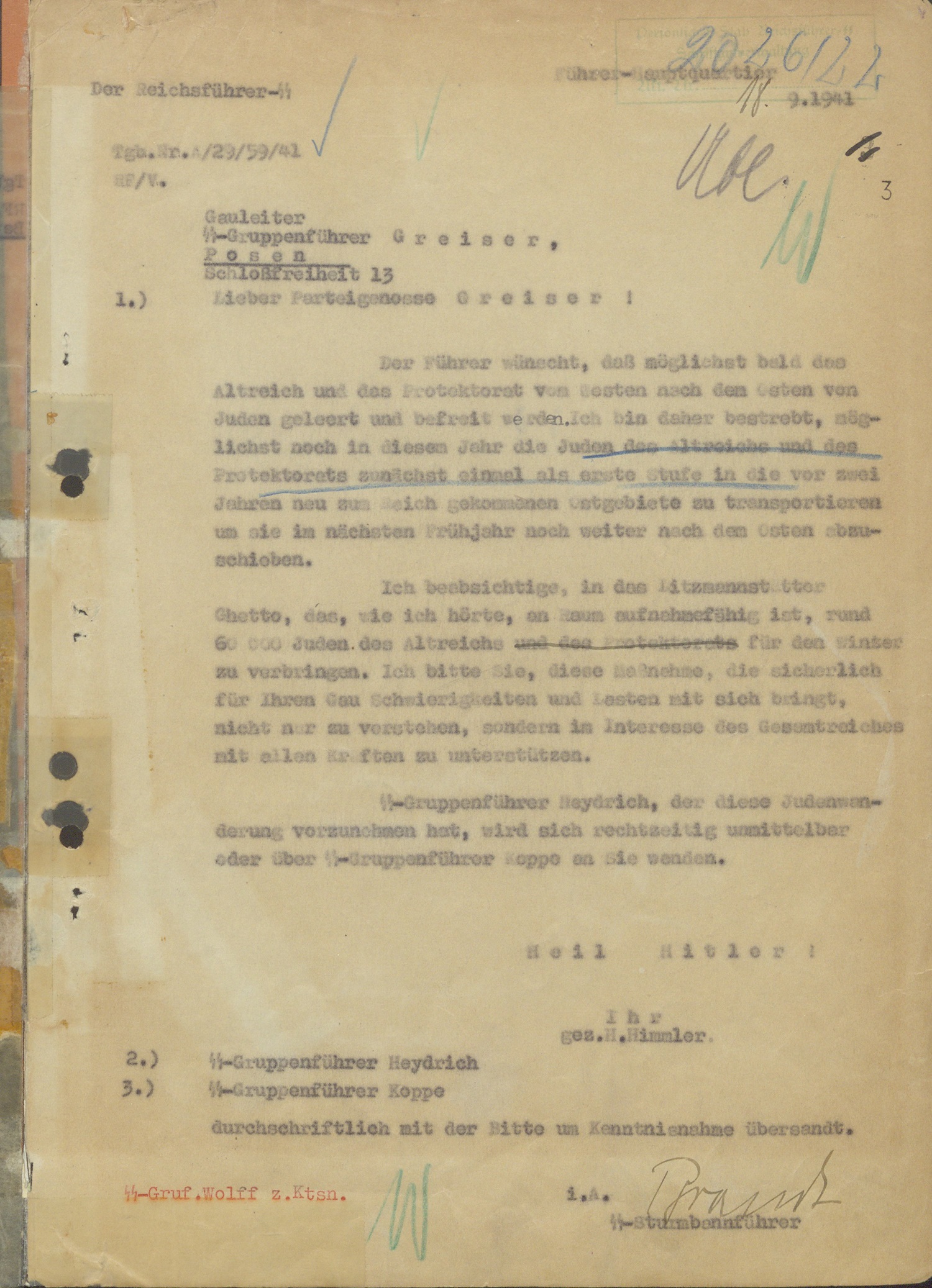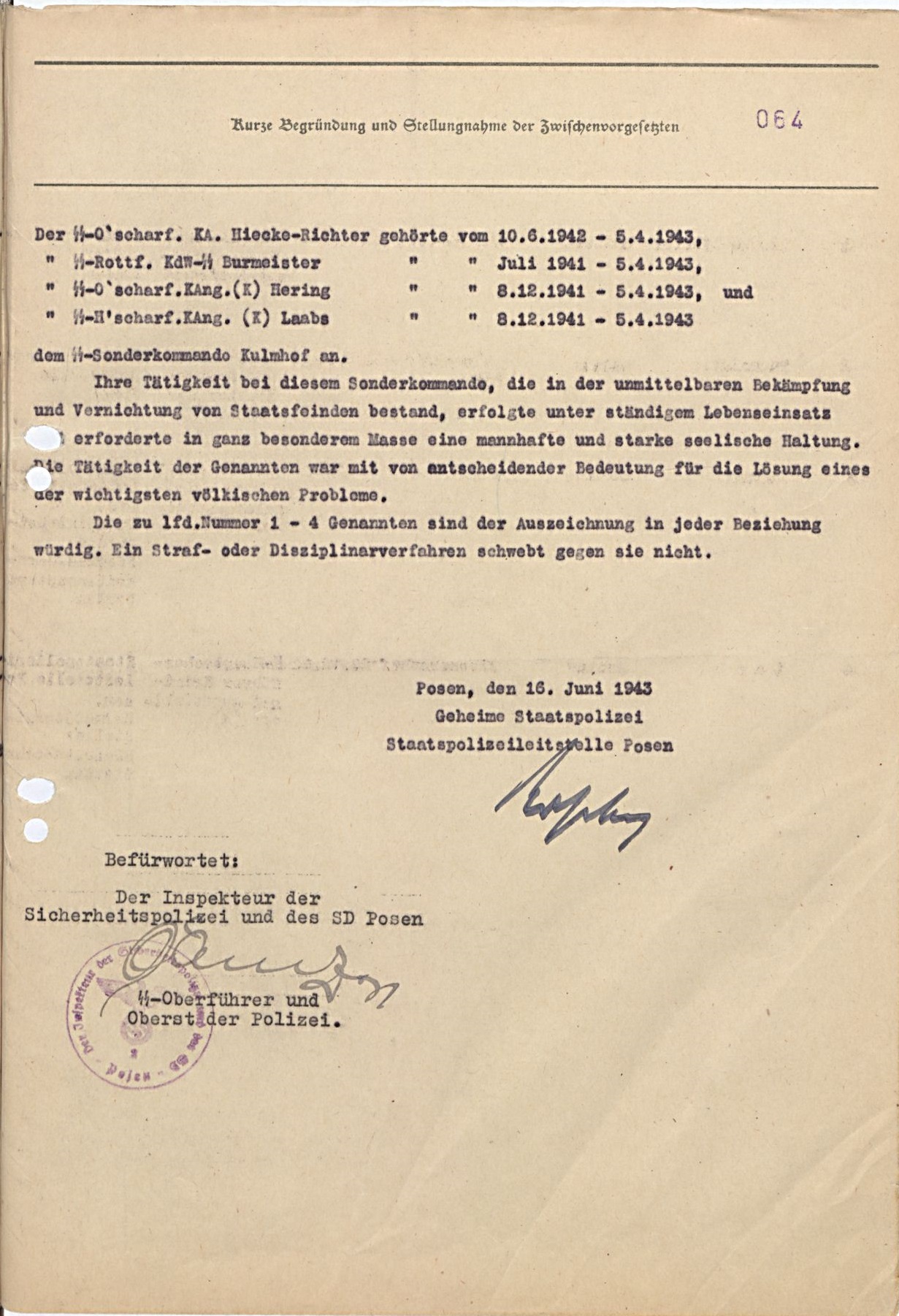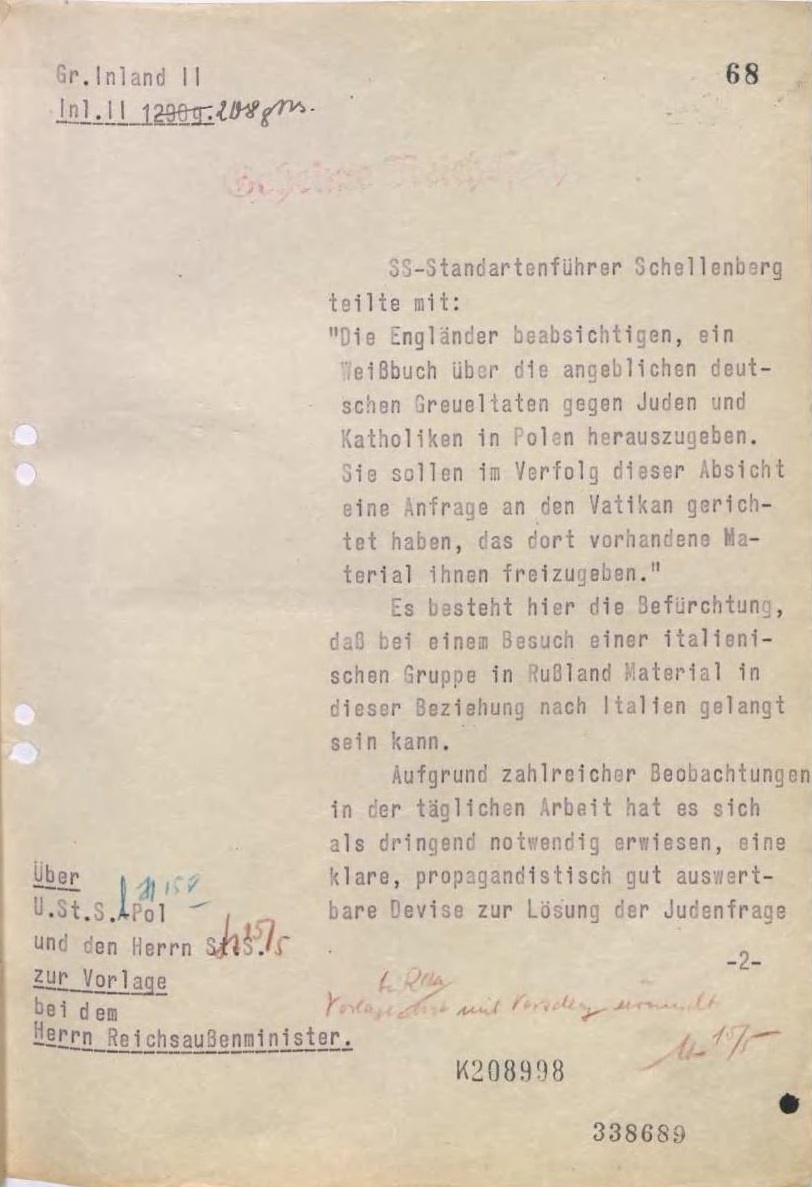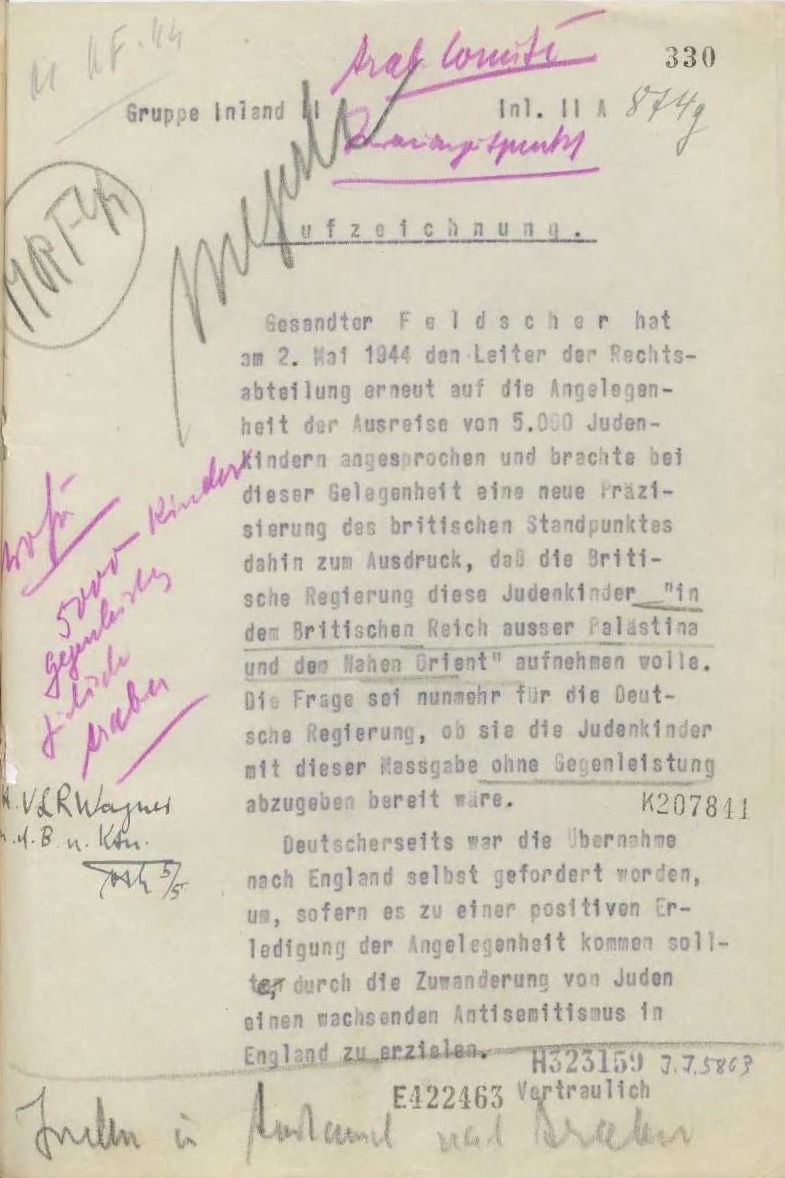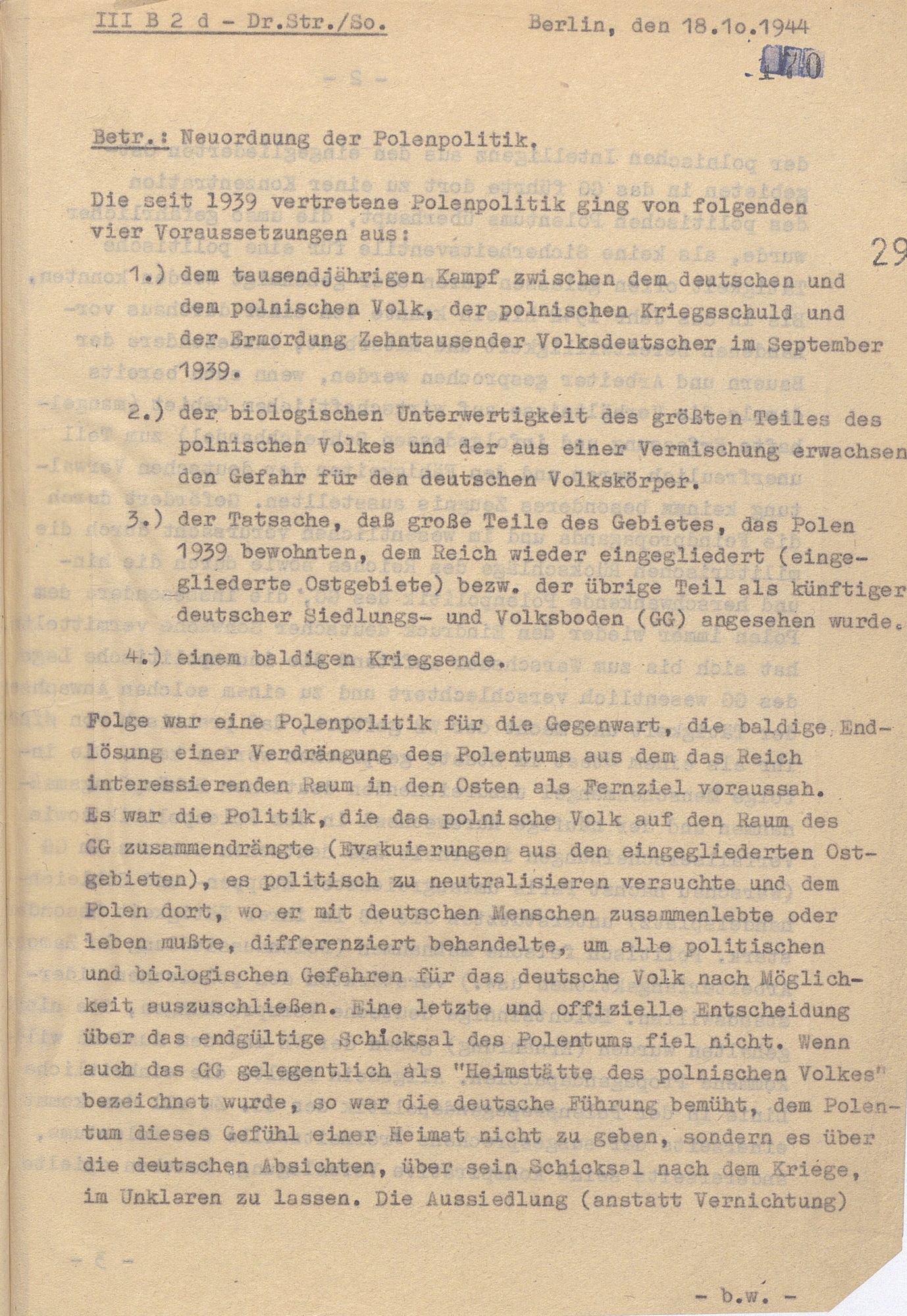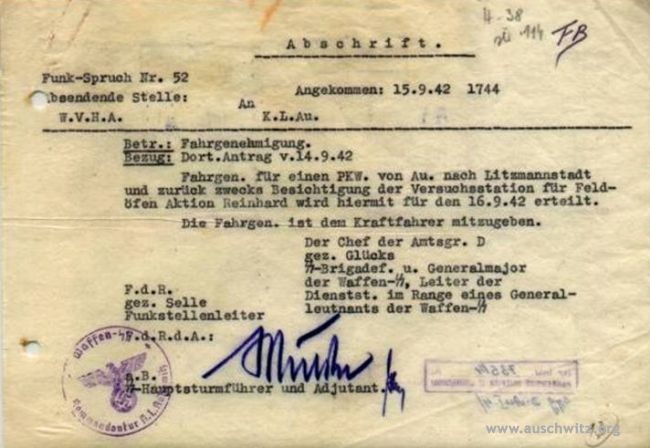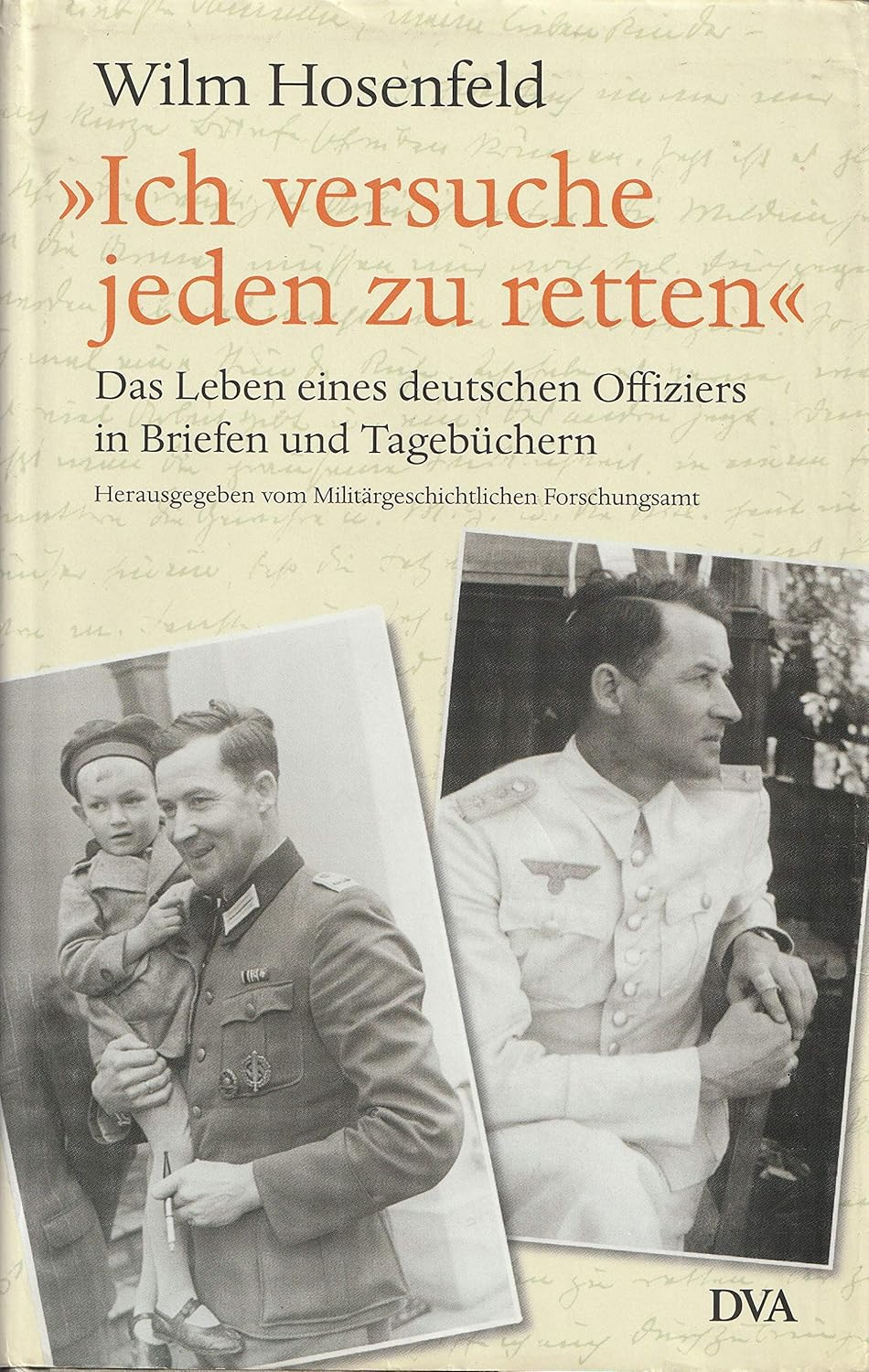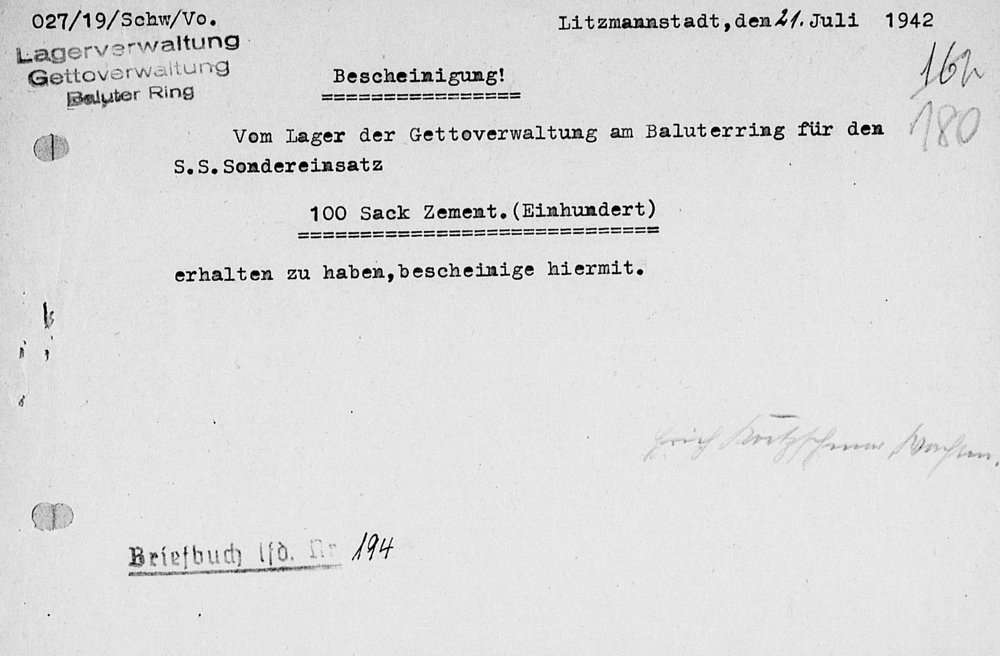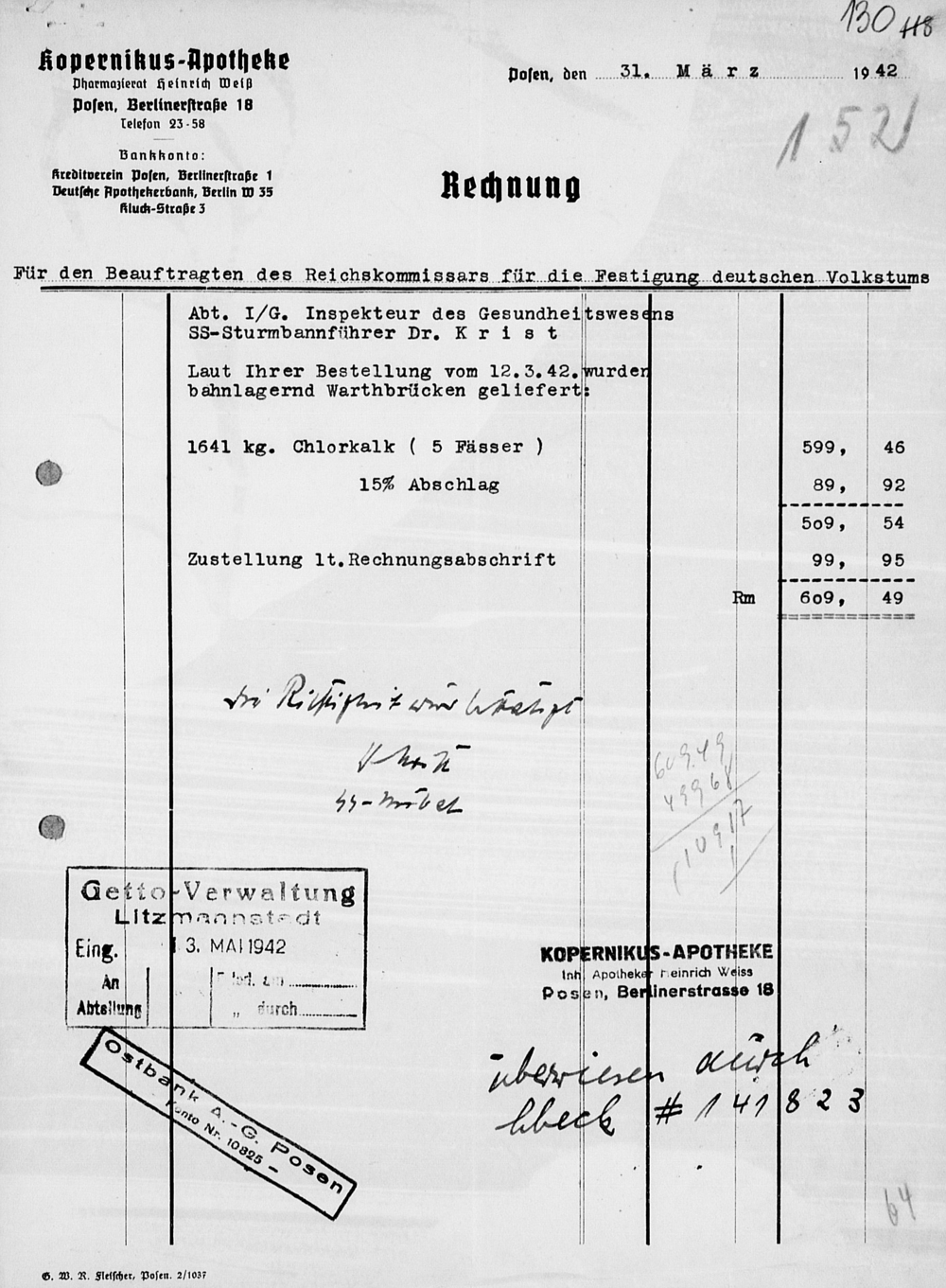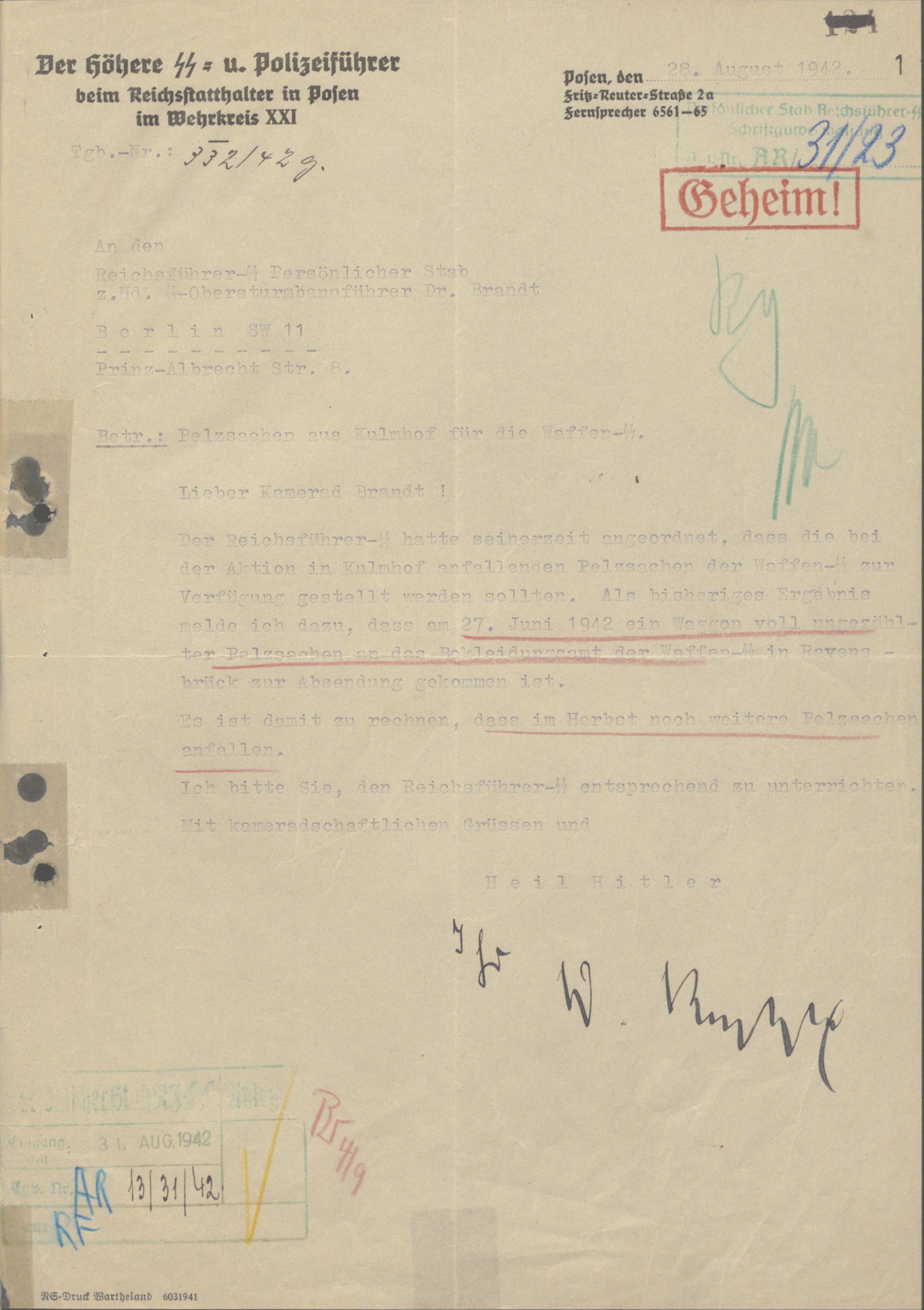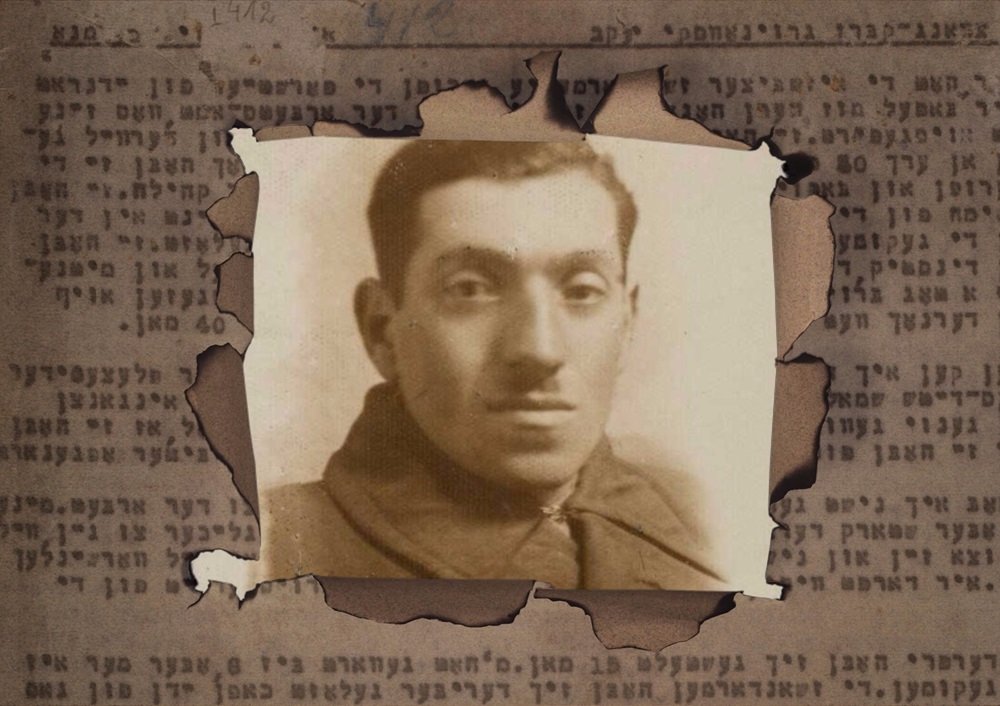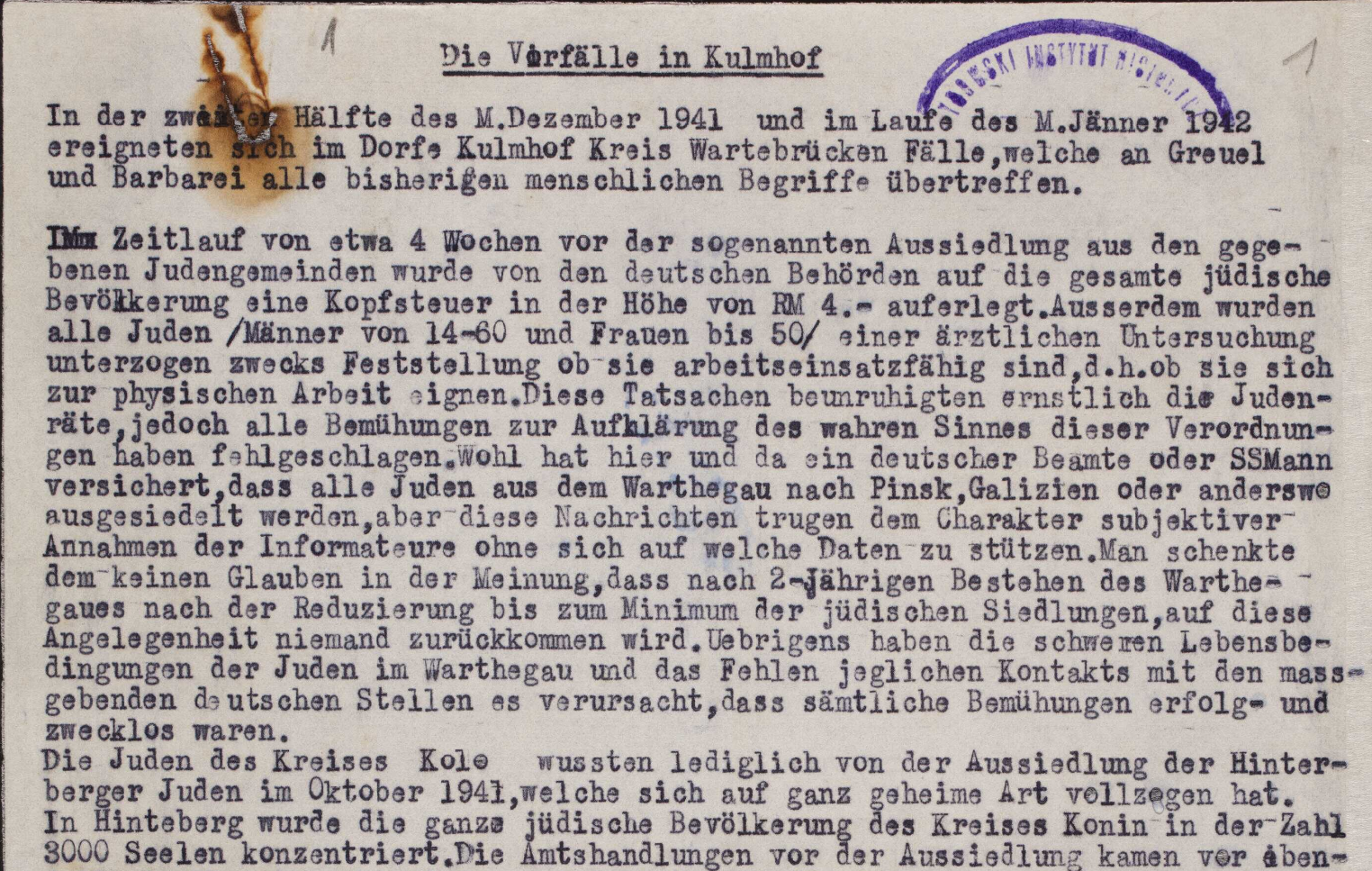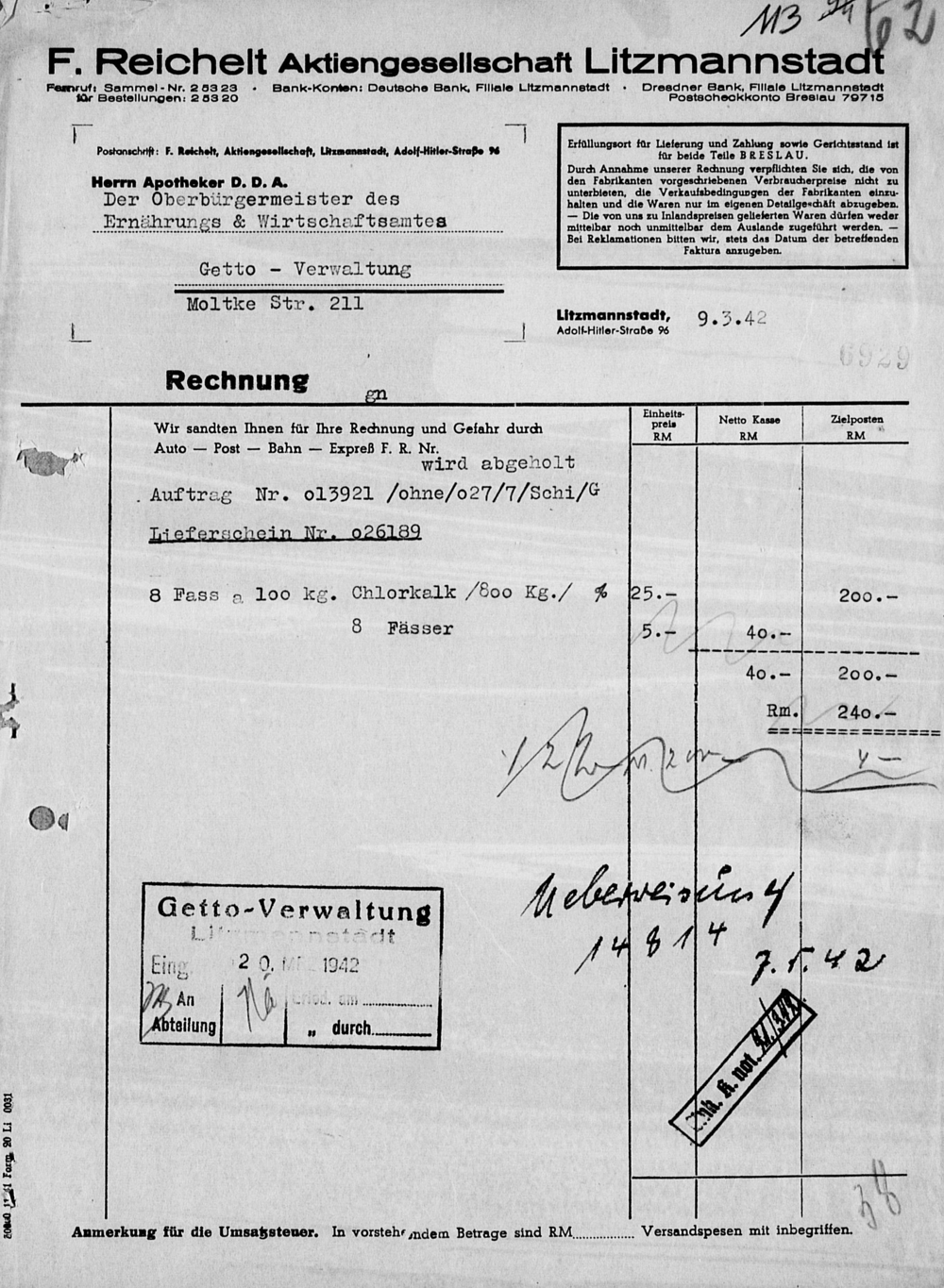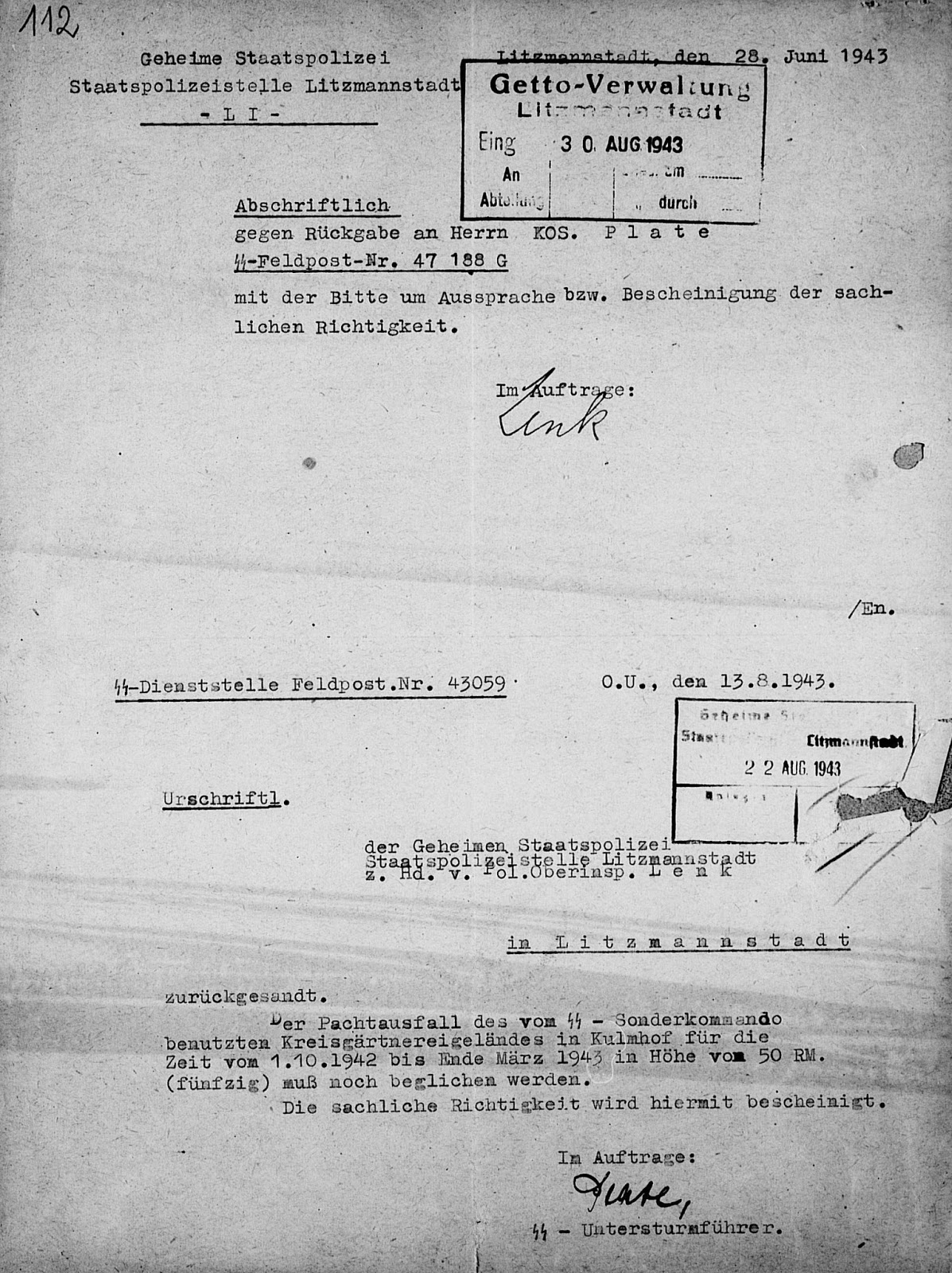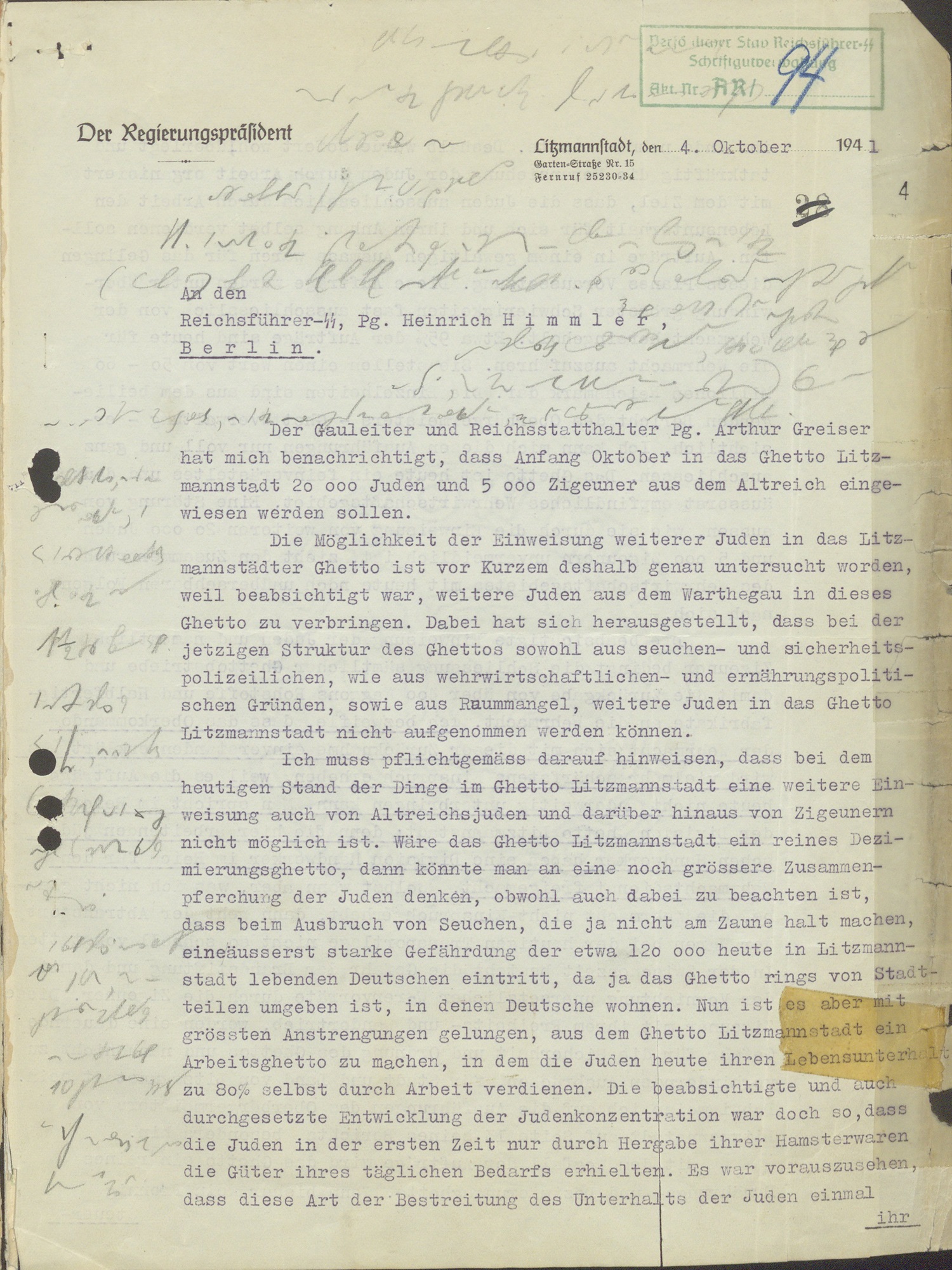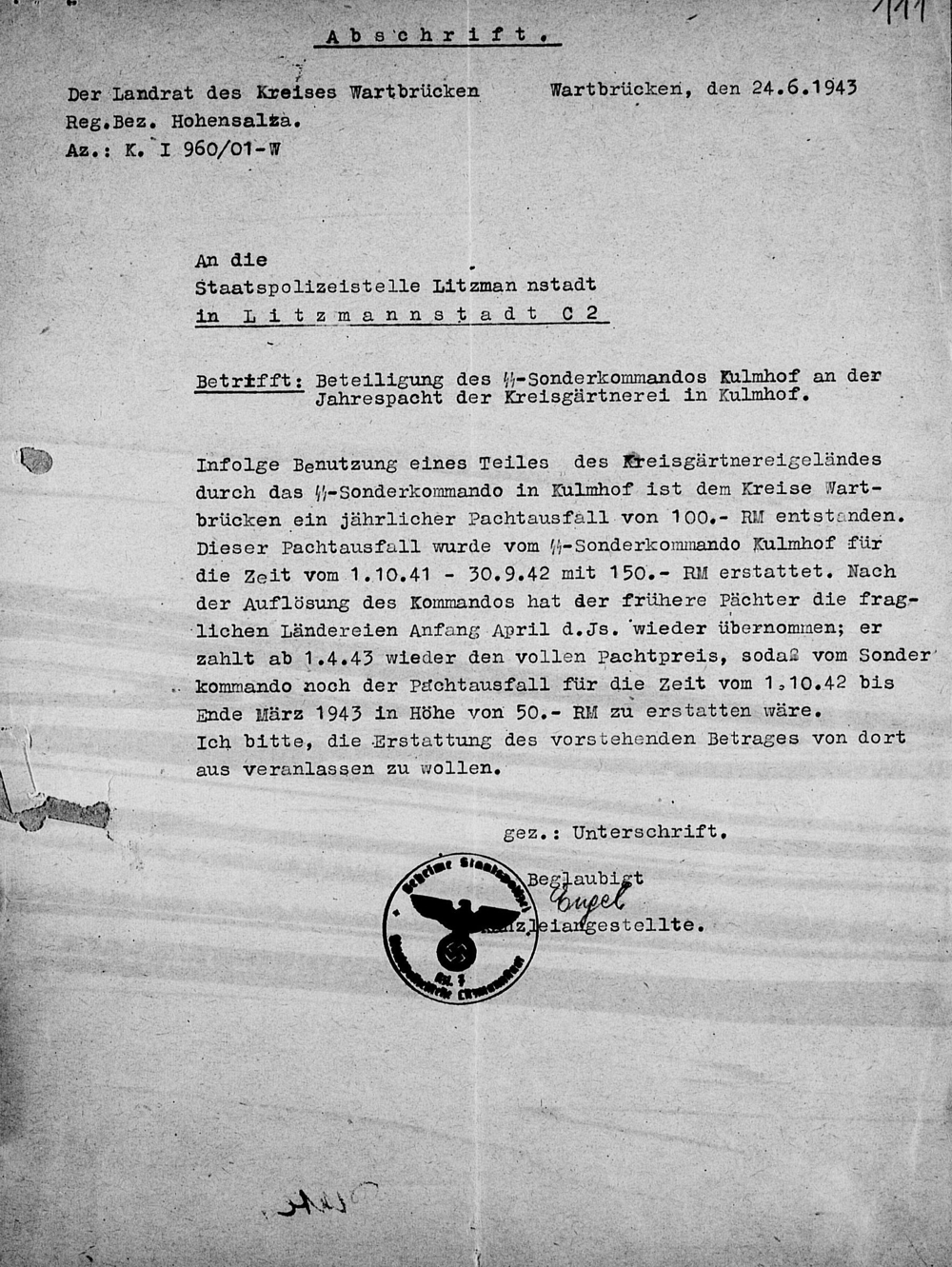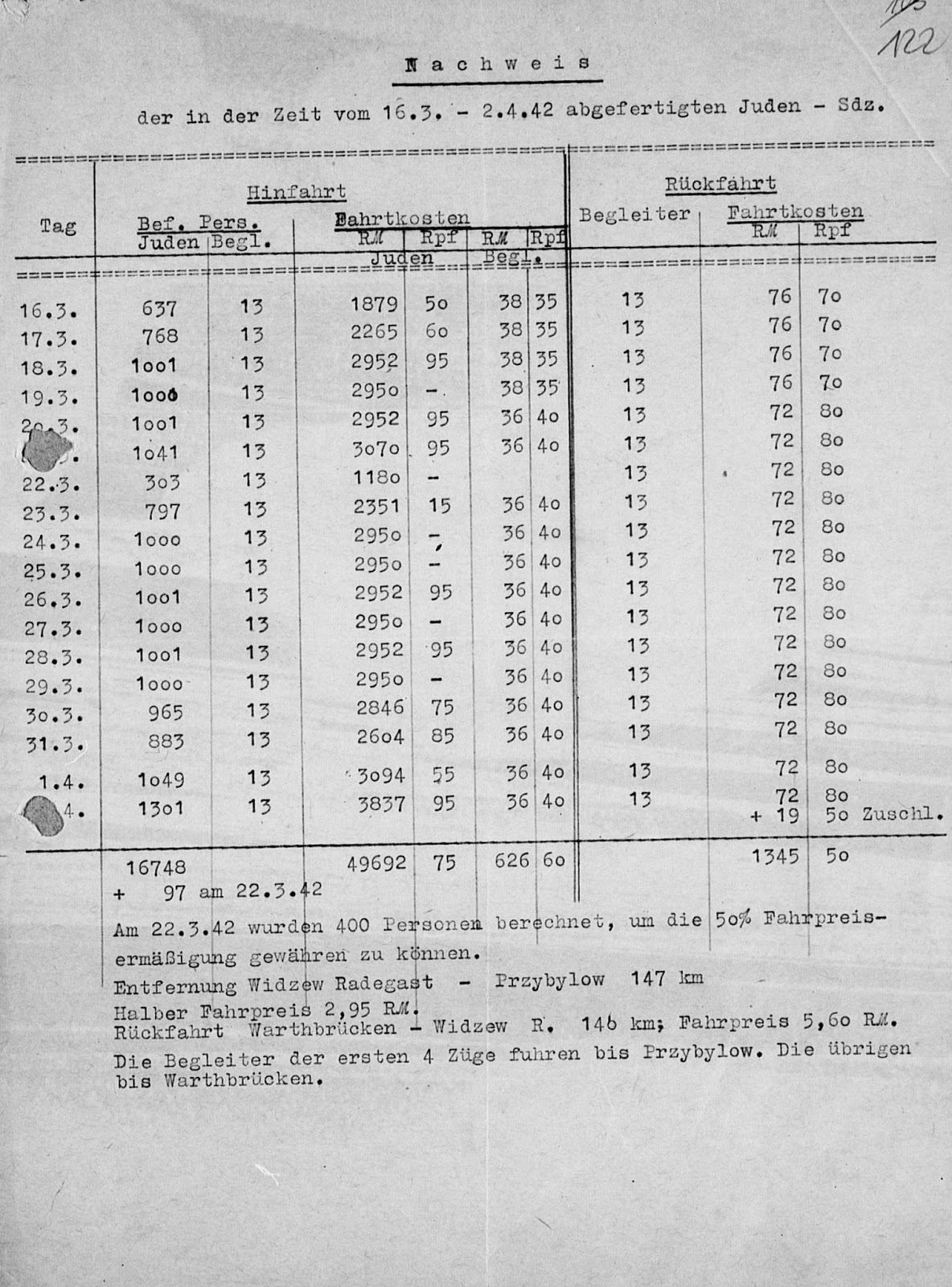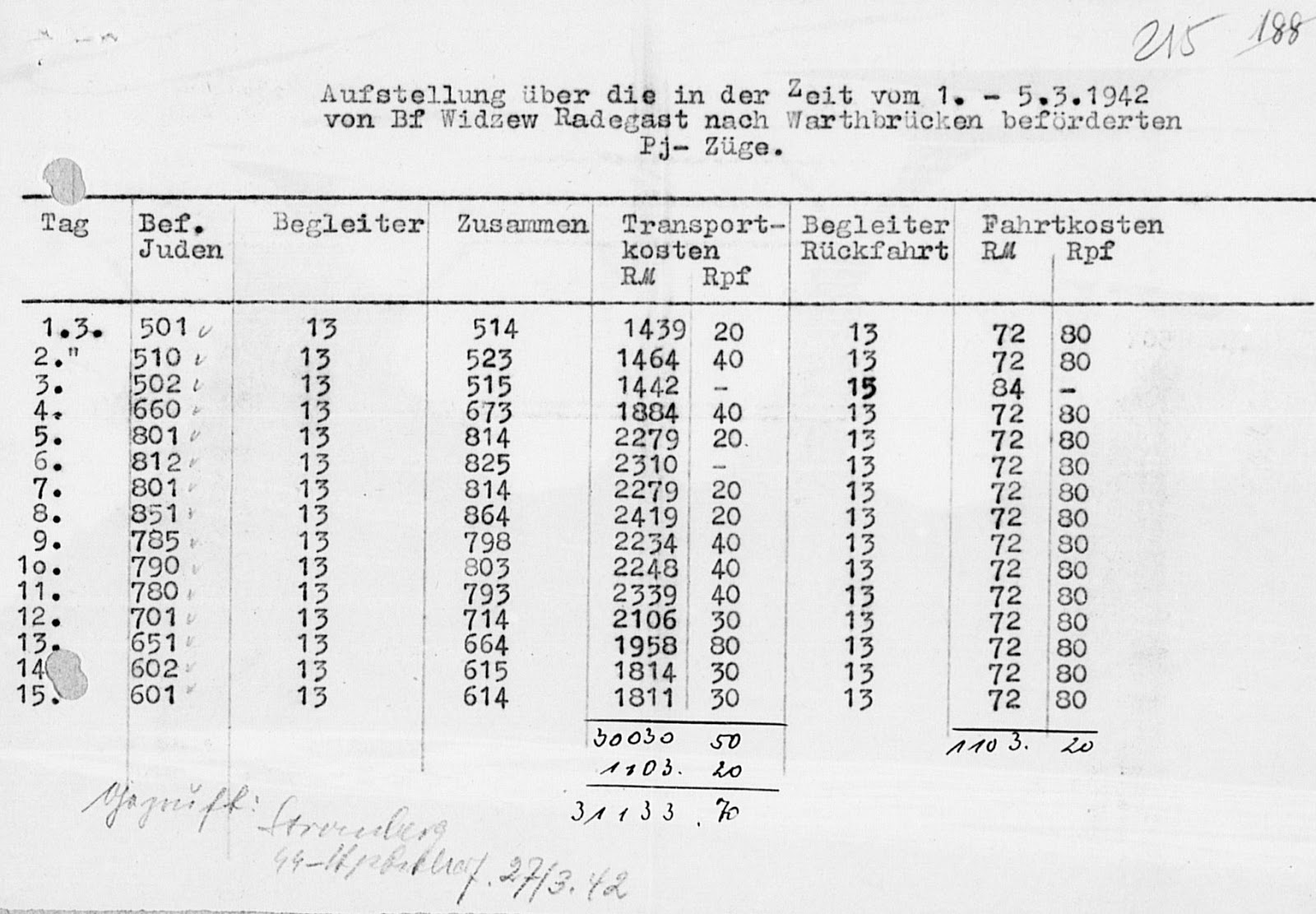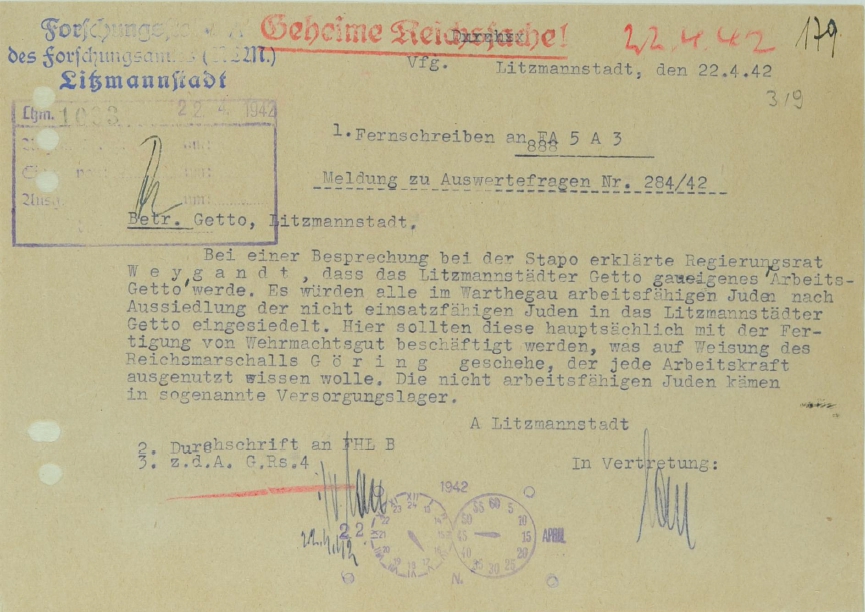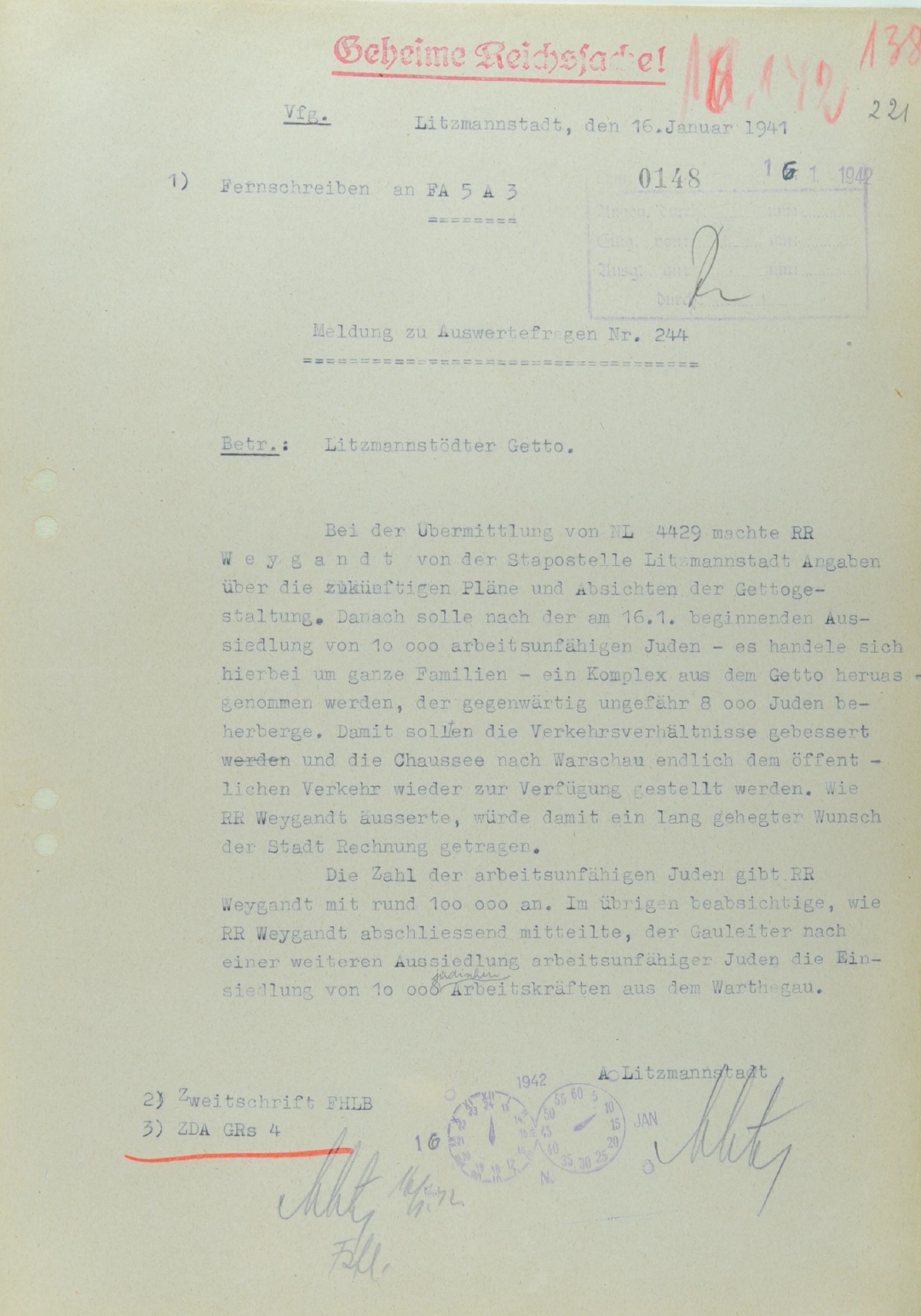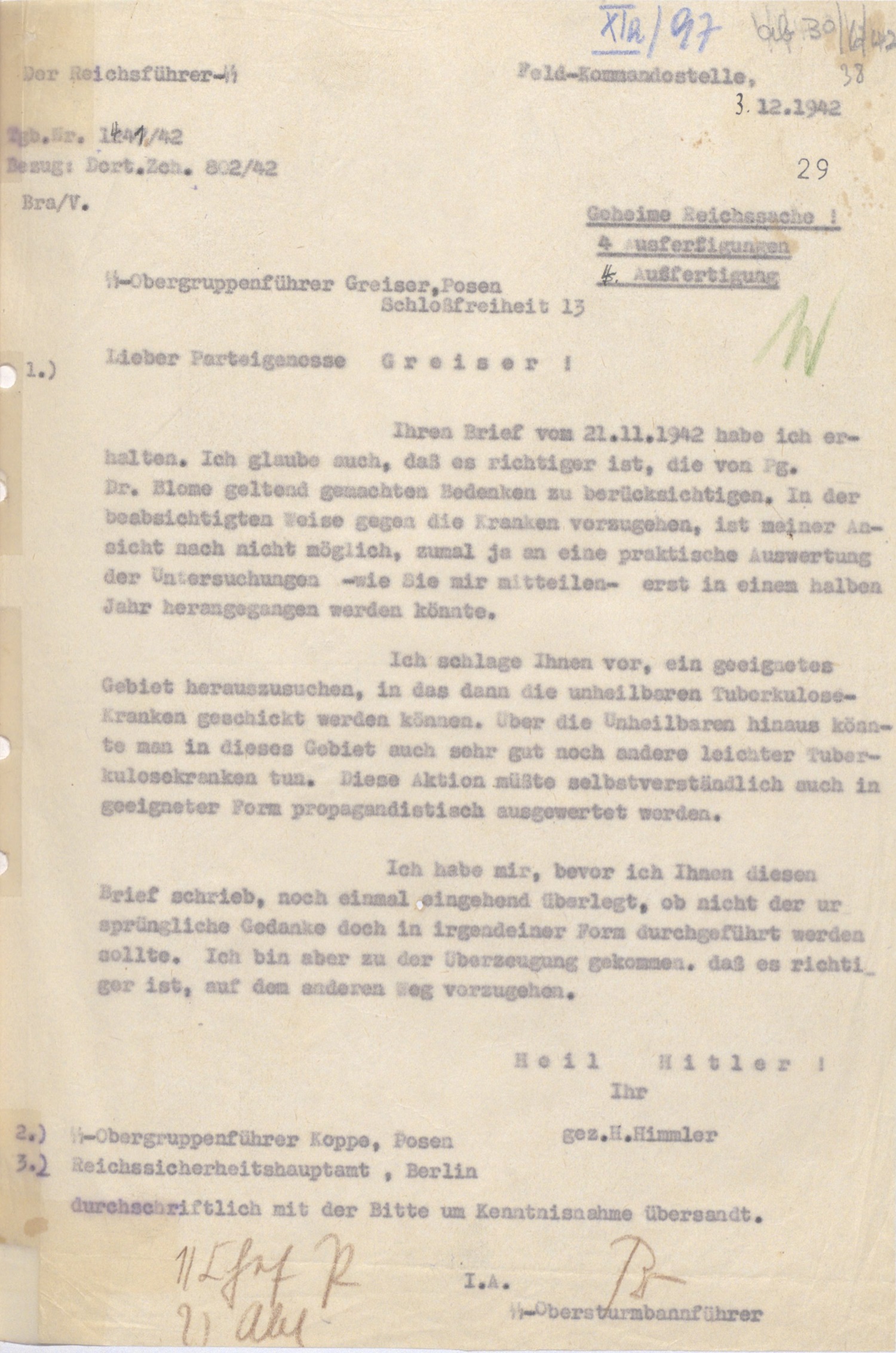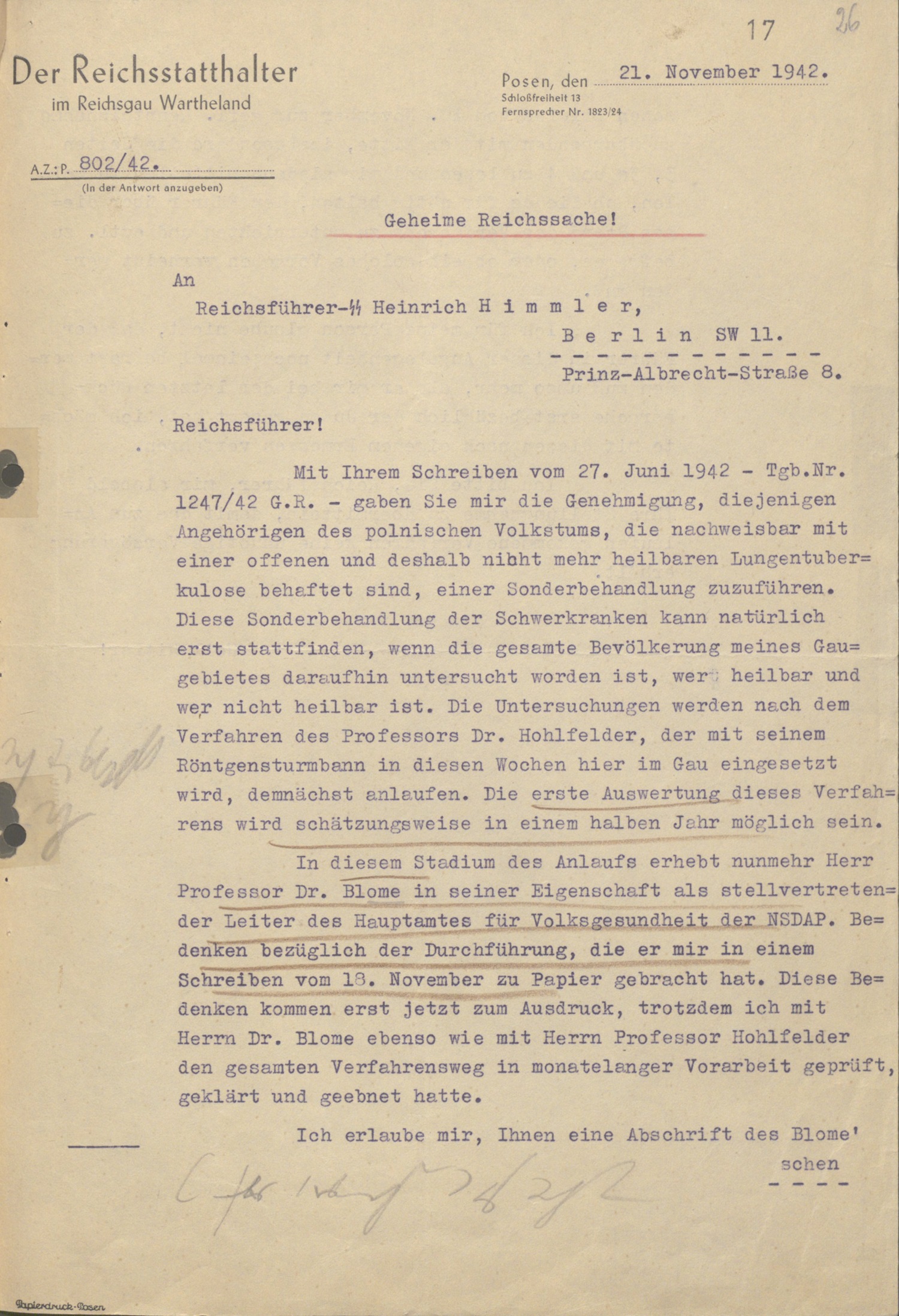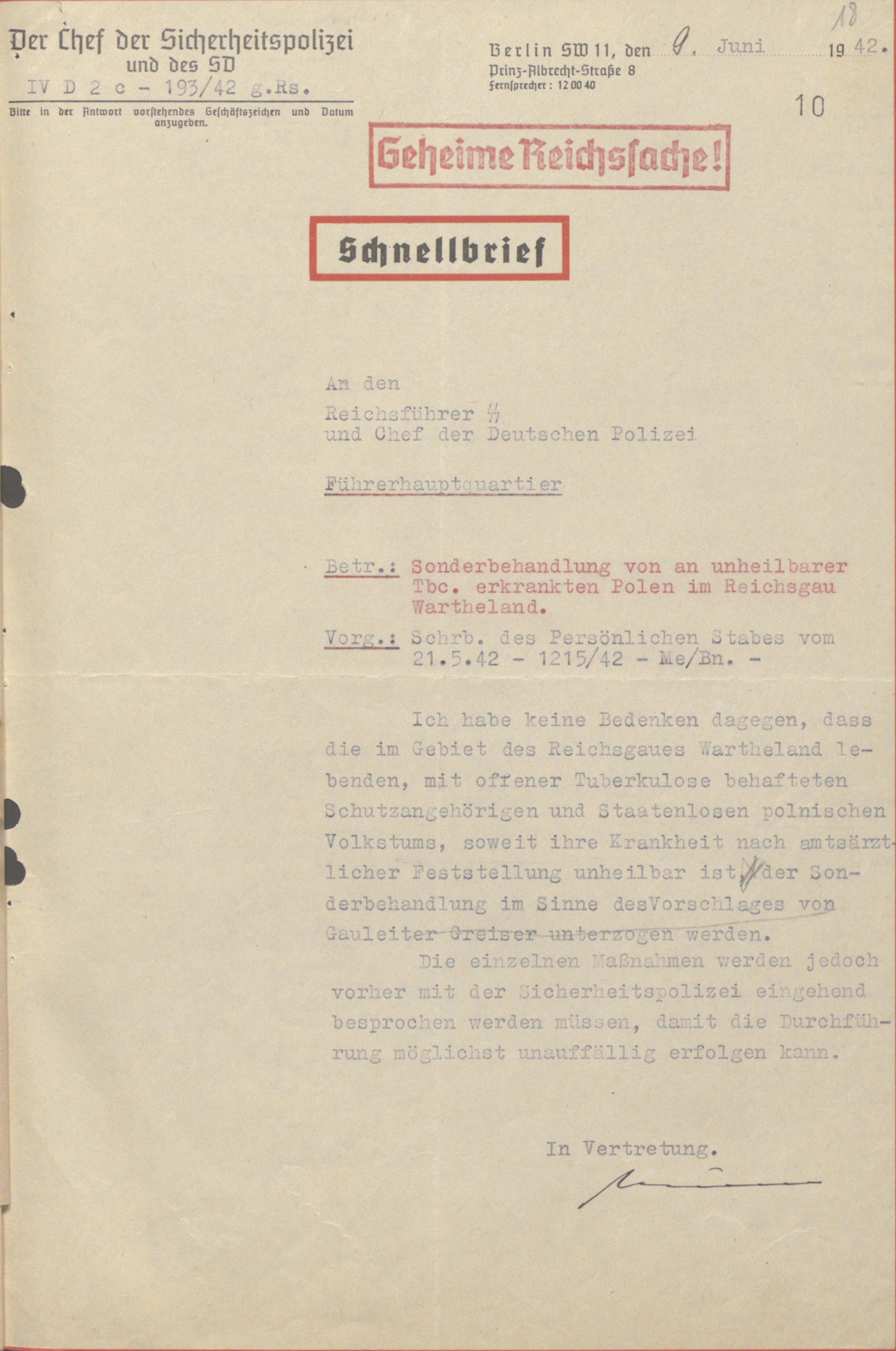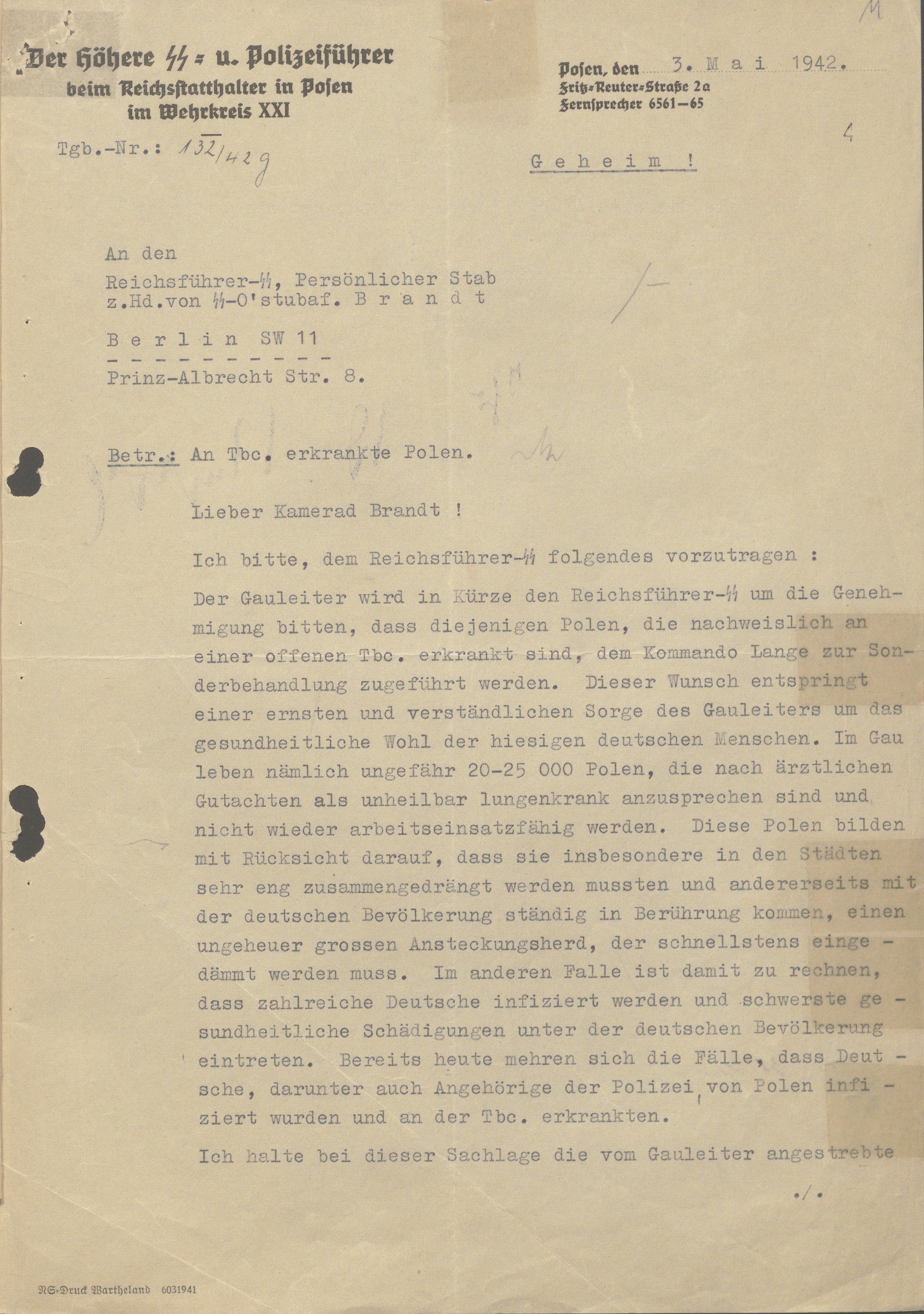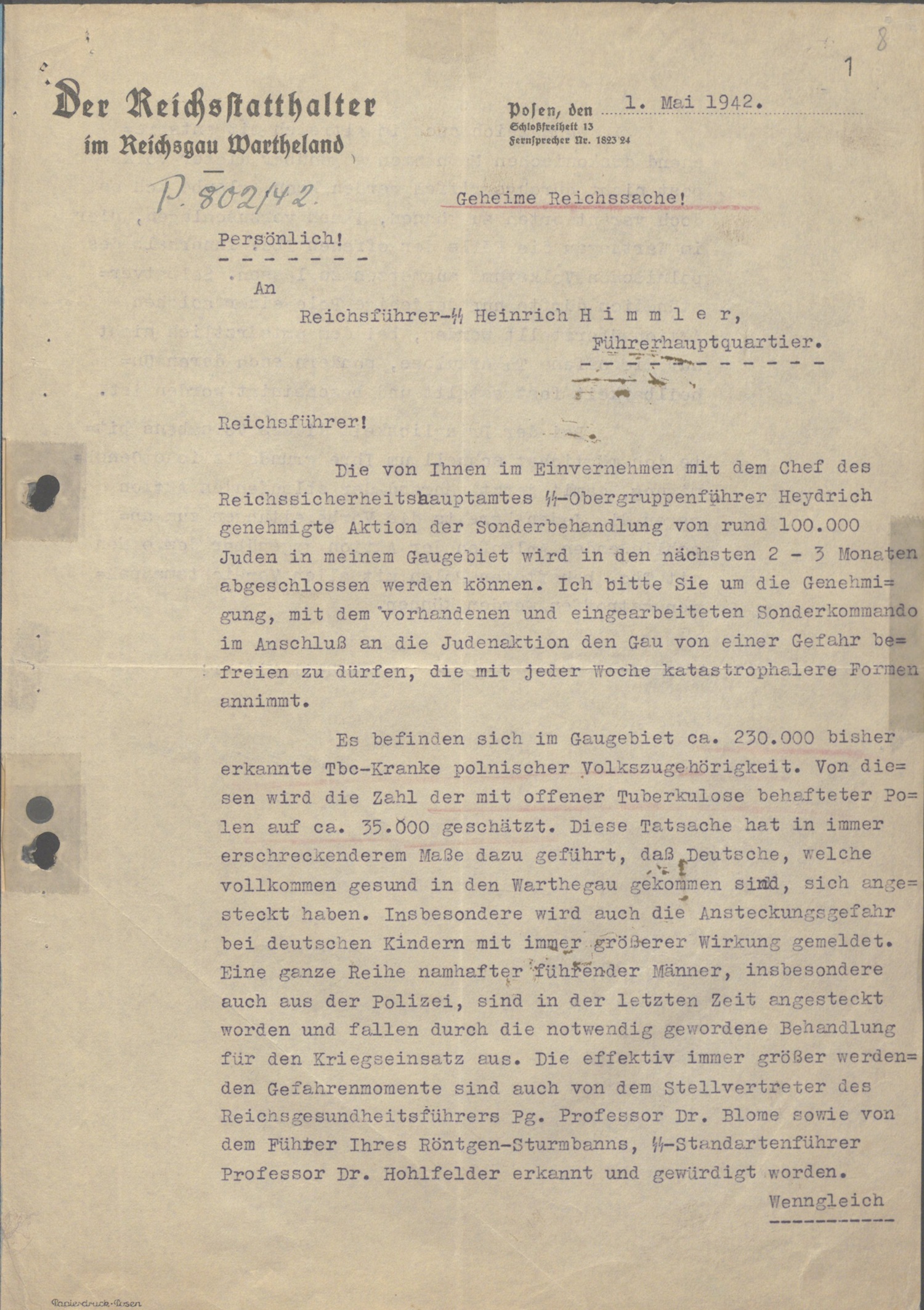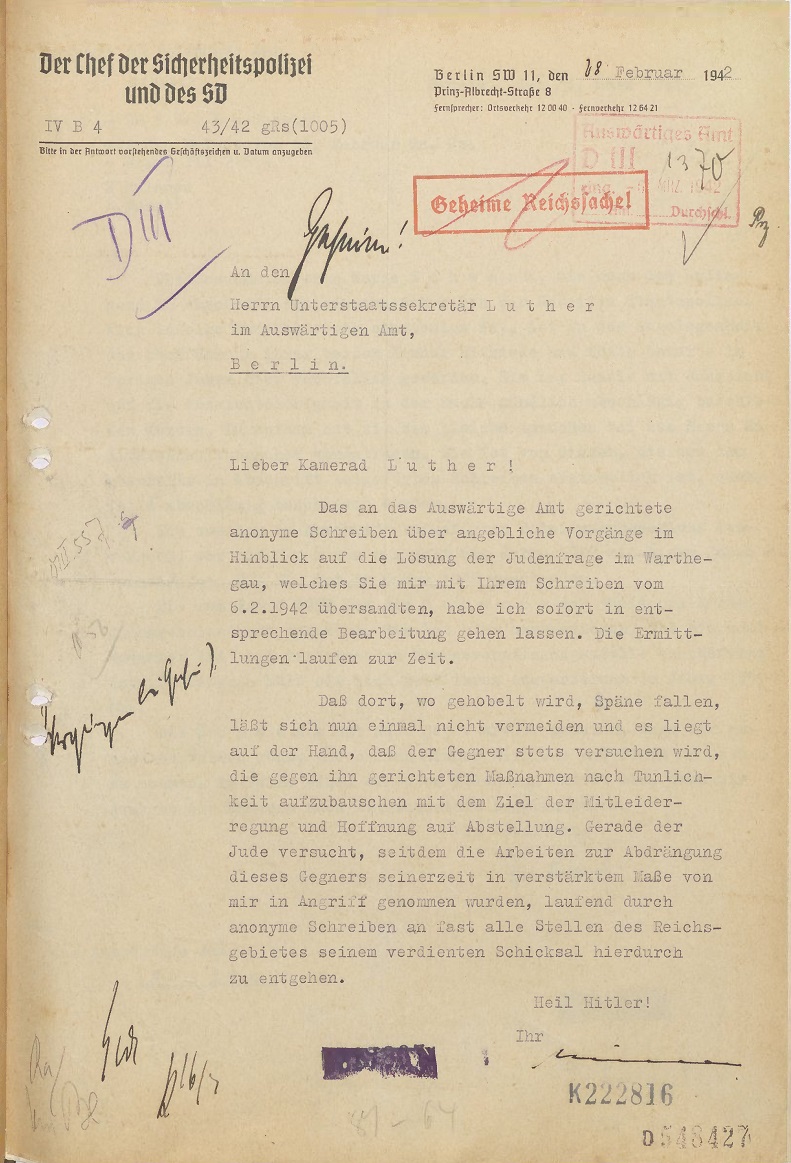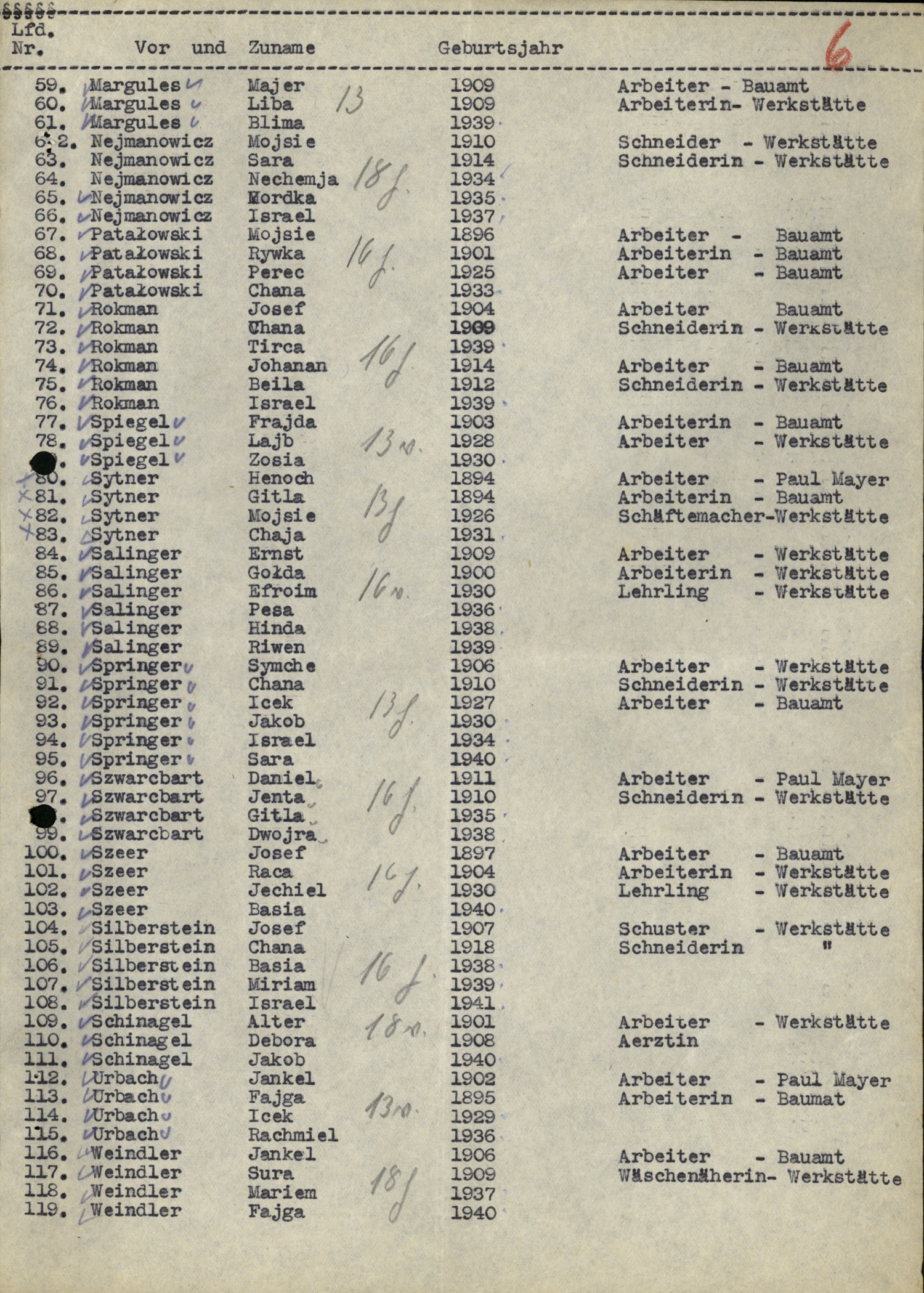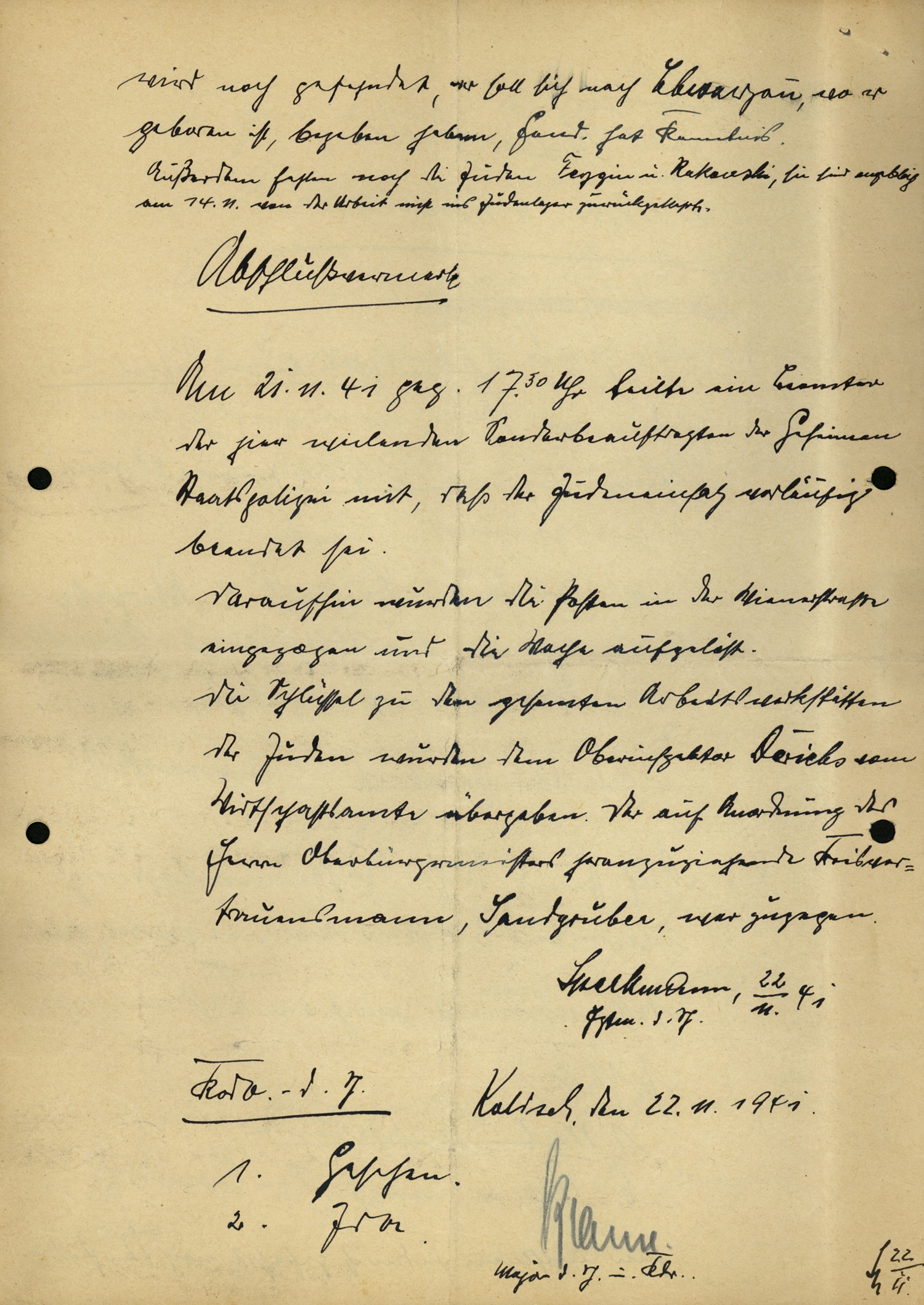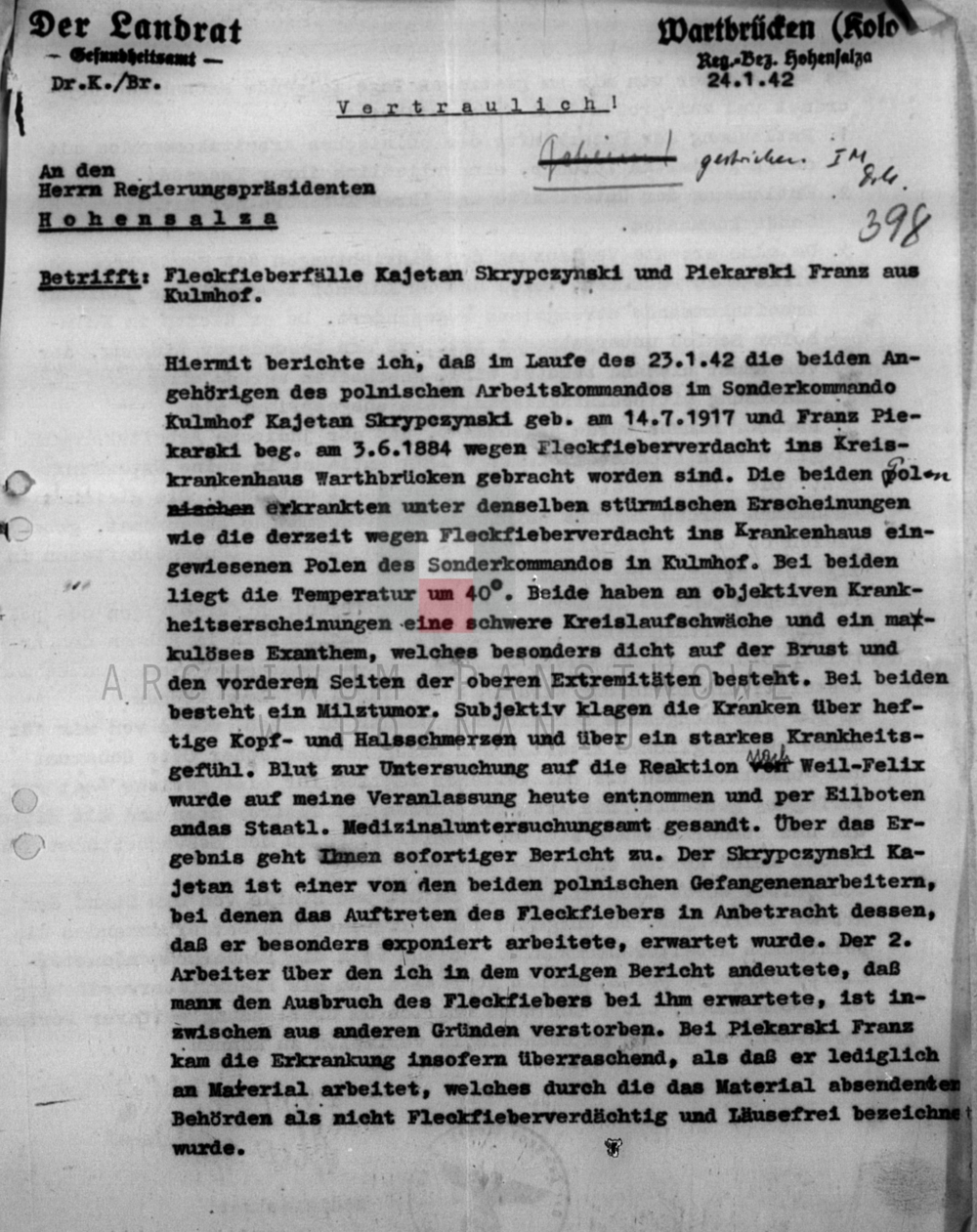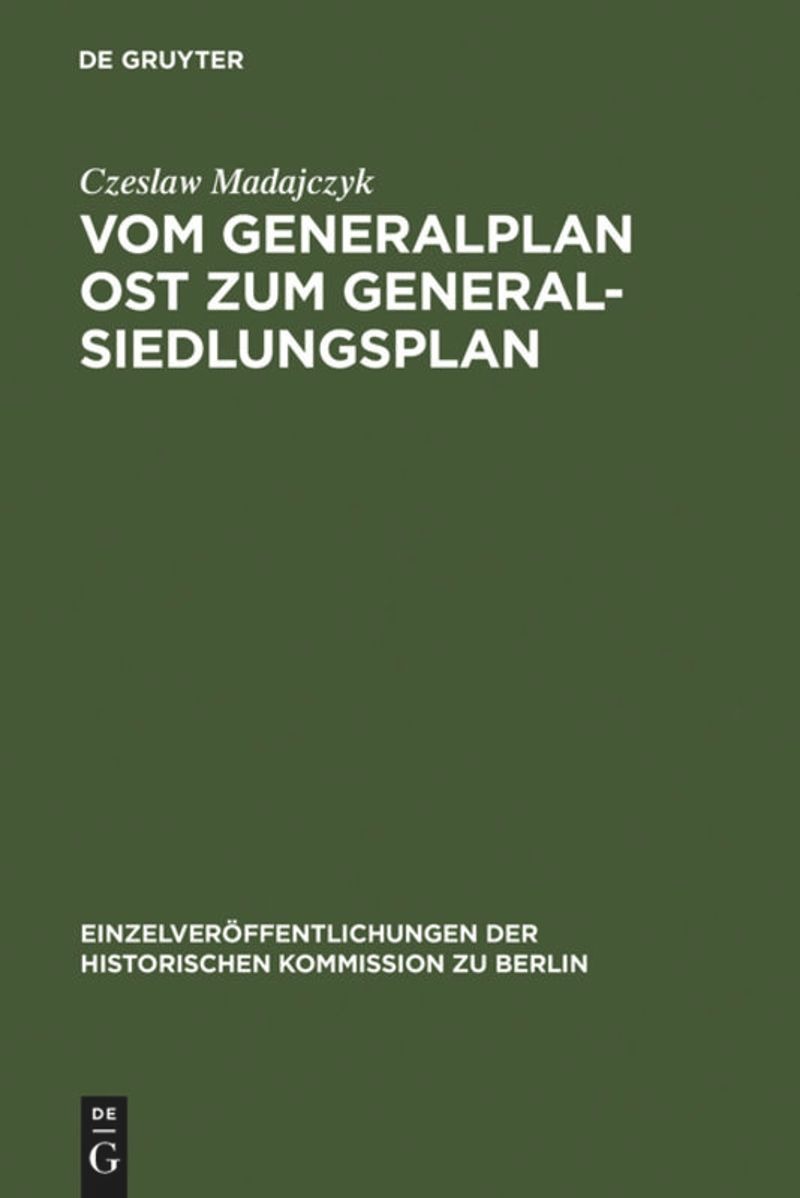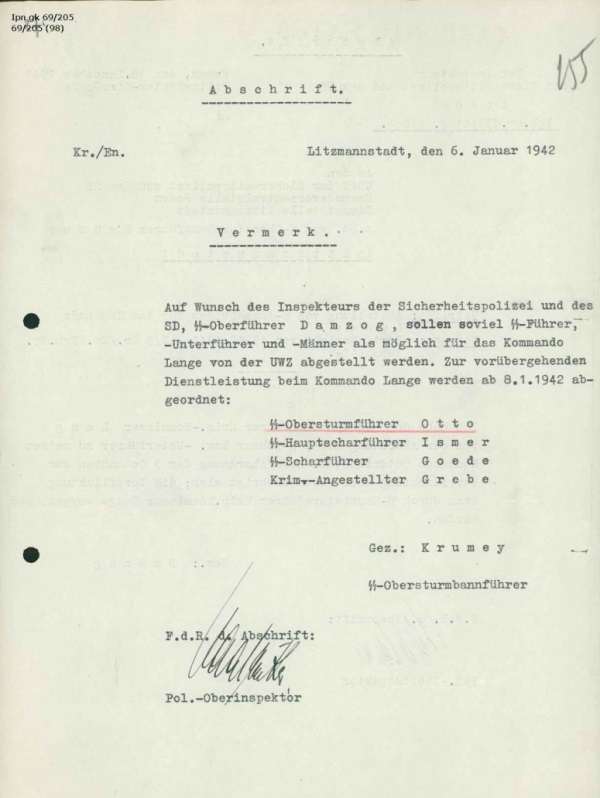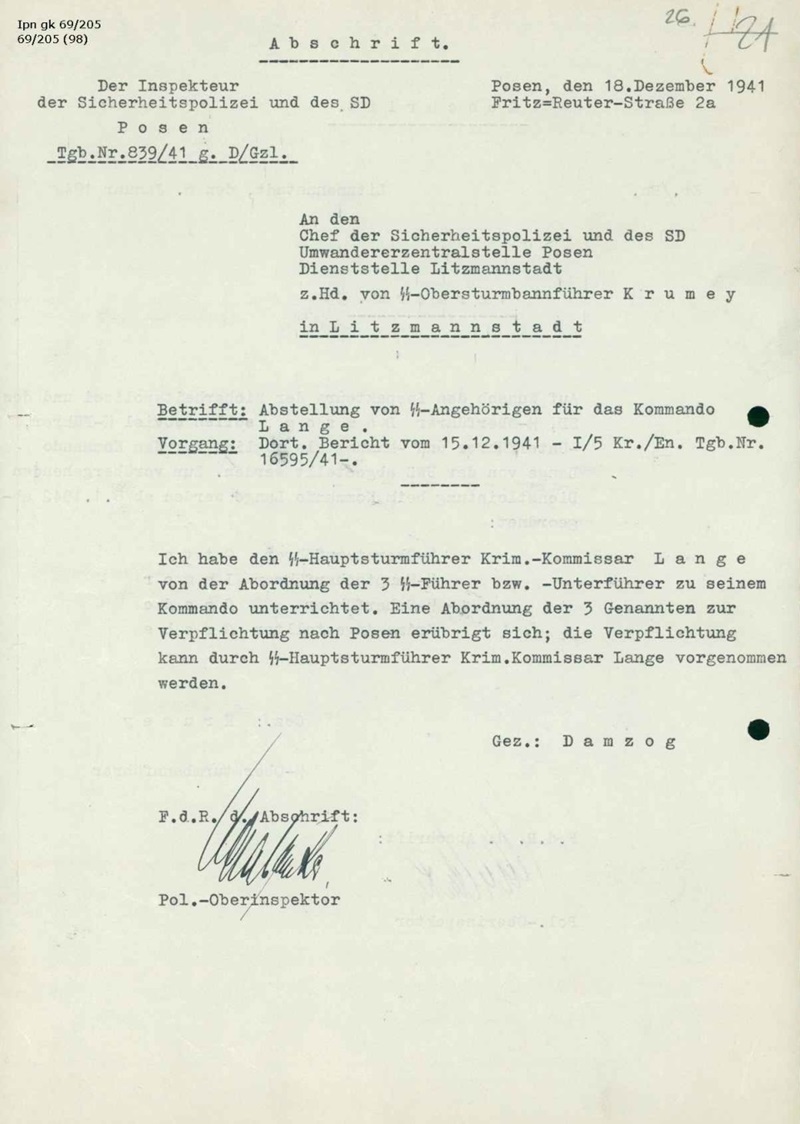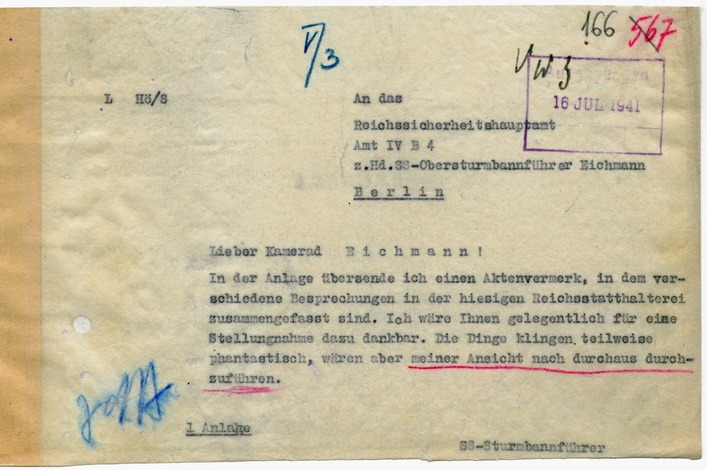Documents
Memo dated June 5, 1942, authored by SS-Hauptsturmführer Willy Just of RSHA office II D 3 a (Motor Vehicle Department
Radio message from the Gendarmerie District Ostrowo to the Gendarmerie post in Adelnau, dated May 16, 1942. The message reported
On June 22, 1943, the Forschungsstelle A Litzmannstadt – a local intelligence branch under Hermann Göring's Secret Service –
Letter dated February 14, 1944, regarding the Nazi administration's plans for the liquidation of the Litzmannstadt (Łódź) ghetto, one of
On September 18, 1941, Heinrich Himmler sent a letter to Arthur Greiser, Gauleiter of the Warthegau, conveying Hitler's request that
Proposal for the Award of the War Merit Cross II Class with Swords by the Gestapo Headquarters in Posen, dated
In May 1943, Walter Schellenberg, head of RSHA Office VI (Ausland – SD-Ausland), informed the German Foreign Office of Britain’s
The Feldscher Aktion, named after Swiss diplomat Peter Anton Feldscher, represented a significant diplomatic effort by the British government during
On 8 July 1942, Albert Plate from the Sonderkommando Kulmhof discussed with the Ghetto Lodz Administration regarding the supply of
Memo by SS-Sturmbannführer Herbert Strickner, head of RSHA Department III (Volkstum, or Ethnicity), analyzing occupation policy from 1939 to 1944
On April 16, 1943, Hans Biebow, head of the Nazi's Łódź (Litzmannstadt) Ghetto Administration, penned a letter to Friedrich Ribbe
On 15 July 1942, SS-Obersturmbannführer Ernst Fick, commander of the Sennheim training camp, requested a portable flamethrower unit from the
According to a radio message from September 15, 1942 and a trip report dated September 17, 1942, on 16 September
Between 1940 and 1942, Franz Heinrich Bock served as Mayor and Official Commissioner of the Polish village of Poddębice. During
Wilm Hosenfeld, a German officer stationed in Warsaw during World War II, recounts in a diary entry of 23 July
In June and July 1942, the Ghetto Łódź Administration delivered large quantities of chlorinated lime and cement to the
In March 1942, the Inspector of the Health Service under the Reich Commissary for the Consolidation of German Folk ordered
The letter dated 28 August 1942 discusses the transfer of furs confiscated from those murdered in Kulmhof (Chelmno) to the
Deposition in Yiddish in February 1942 in the Warszaw Ghetto by Szlama Winer aka Jakub Grojnowski. In his account titled
In a report titled "The Incidents in Kulmhof," Hersz Wasser, the secretary of the Warsaw Ghetto underground organisation Oneg Shabbbat,
On 8 March 1942, the F. Reichelt Aktiengesellschaft Litzmannstadt, a Pharmaceutical Company, issued an invoice to the Ghetto Administration in
Albert Plate, deputy commander of Kulmhof extermination camp, confirmed the correctness of the claim by Walter Becht, Disctrict Administrator of
On October 4, 1941, the Government President of Litzmannstadt, Friedrich Uebelhoer, wrote to Reichsführer-SS Heinrich Himmler, addressing the planned transfer
The letter dated June 24, 1943 was sent from Walter Becht, Disctrict Administrator of Warthbrücken (Kolo) to the State
On 16 August, 1941, the British intelligence intercepted a radio message from the Higher SS and Police Leader Center, Erich
Two days after Bach-Zelewski requested Sonderkommando Lange to come to Baranowicze, on August 18, 1941, the British intelligence intercepted another
The document details a list of transports carrying 16,748 Jews from Radegast Station in the Łódź Ghetto to Przybyłów near
The document provides a list of transports with 10,348 Jews deported between March 1 and 15, 1942 from Radegast Station
The document is dated April 22, 1942 and was written by Forschungsstelle A Litzmannstadt (Łódź), a local branch of
The document, dated January 16, 1941, was addressed from Forschungsstelle A in Litzmannstadt to Forschungsamt 5 A 3. Both offices
The telex, dated December 9, 1941, was sent from Forschungsstelle A Litzmannstadt to Forschungsamt 5 A 3, both of which
The letter, dated December 3, 1942, from Himmler to SS-Obergruppenführer Greiser, acknowledges Dr. Blome's concerns regarding the proposed plan to
The letter, dated November 21, 1942, from the Reich Governor of the Reichsgau Wartheland Posen to Reichsführer-SS Heinrich Himmler, discusses
While the Nazi authorities in the Warthegau were already planning the killing of Polish individuals incurably afflicted with tuberculosis, concerns
After receiving the request from the government of the Warthegau to kill Polish nationals suffering from incurable tuberculosis through the
On May 3, 1942, in a coordinated action with the Reich Governor Arthur Greiser of the Reichsgau Wartheland, Wilhelm Koppe,
On May 1, 1942, Arthur Greiser, the Reich Governor in the Reichsgau Wartheland, relayed to Reichsführer-SS Heinrich Himmler that "The
On February 6, 1942, Martin Luther of the German Foreign Office forwarded an anonymous letter to Gestapo chief Heinrich Müller.
The document describes the fate of 127 individuals identified as "Jews with children under 14 years," deported from Kalisch by
This document of November 22, 1941 was written by Hauptmann Speckmann from the regular police in Kalisch (Kalisz) and describes
In January 1942, authorities in the Warthegau region grappled with the spread of typhus originating from Sinti and Roma victims,
On September 2, 1941, Rolf-Heinz Höppner, head of the Central Migration Office in Posen, outlined plans for reorganizing the office
On January 6, 1942, Herman Krumey, the head of the Migration Central Office in Litzmannstadt, recorded the names of three
On December 18, 1941, Ernst Damzog, the Inspector of the Security Police and SD in Posen, wrote to Hermann Krumey,
On July 16, 1941, authorities in the Reichsgau Wartheland convened to deliberate on what was euphemistically termed the "solution of
The following report, dated February 1945, was authored by Heinrich May, detailing his experience and knowledge of the Kulmhof (Chelmno)
